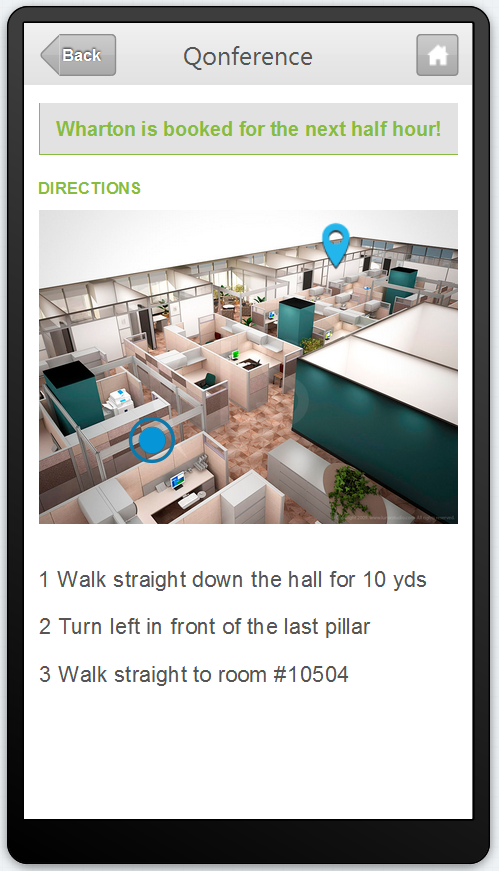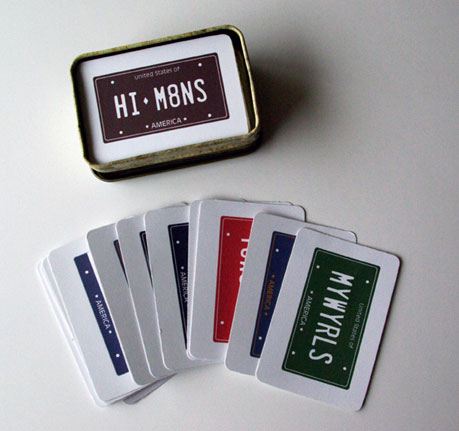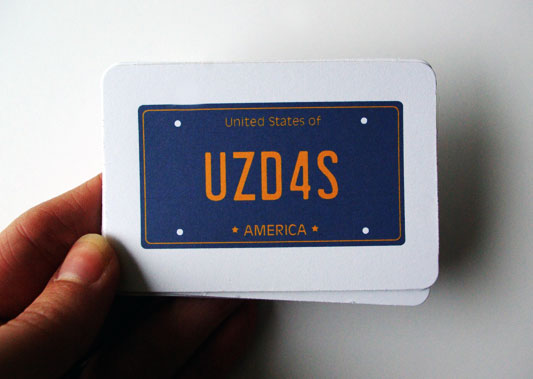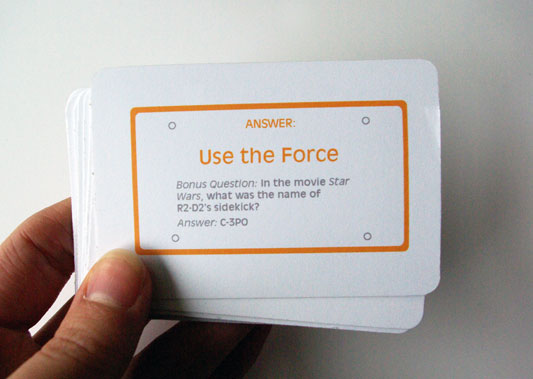LAB 305
Lab 305 is what I call my workspace. The name comes from an old sign that a coworker gave me in jest when I was a collage student designing campus signage for USU. The Aggie-blue sign was an accidental extra, created as a room number plate for a new building. For years, I've paced the sign in my home office or work desk as I've moved from place to place. Like the sign, the projects featured under this section of the site are "extras." They may have no corporate or practical use, but they help me stay alert, inspired, and creative.
PROJECT: INNTRANSIT IPHONE APPLICATION
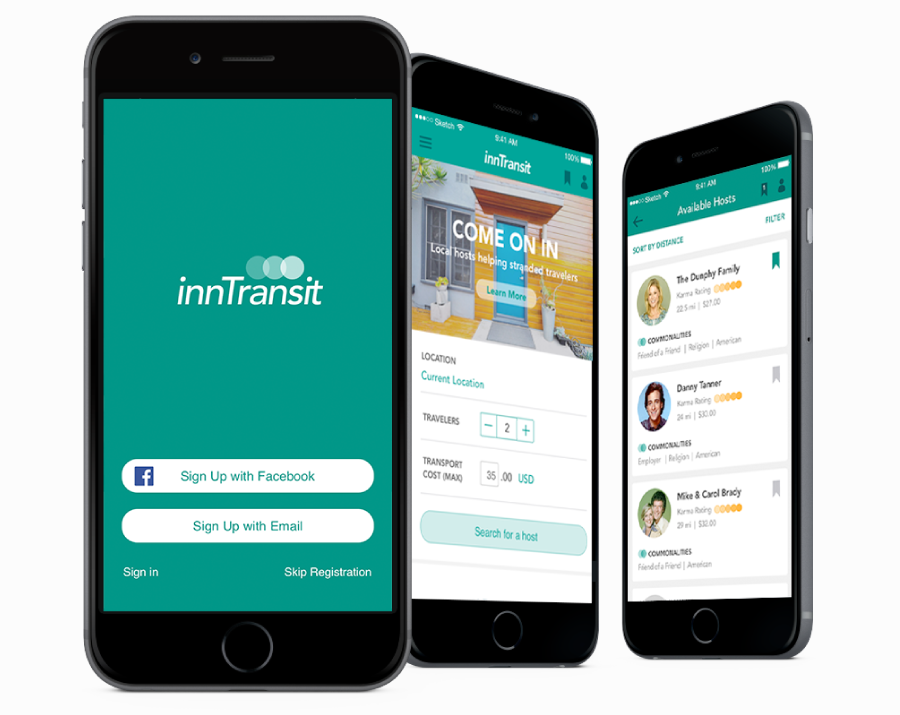
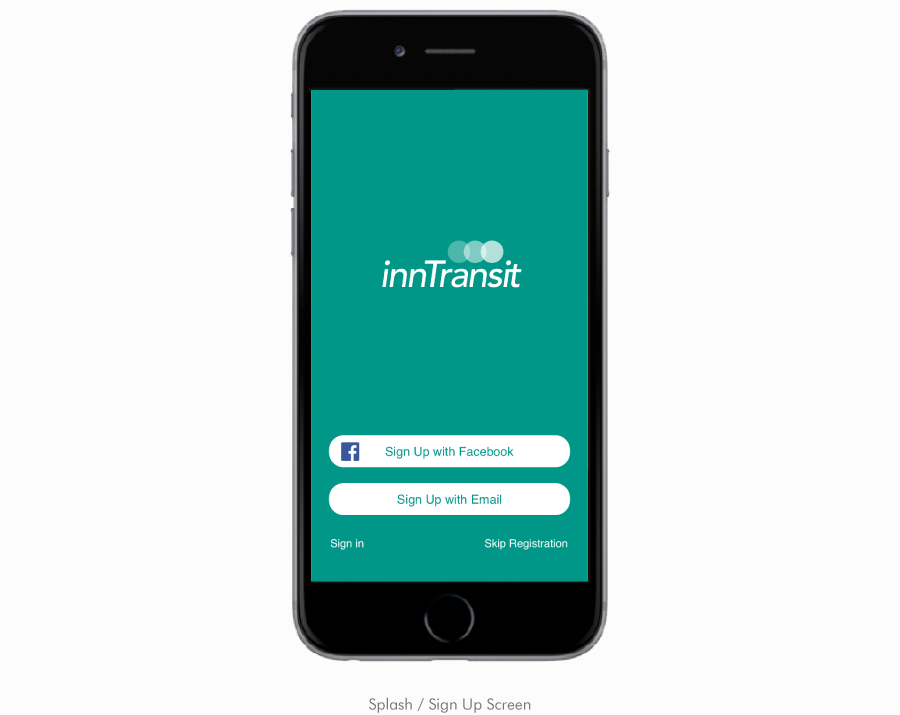
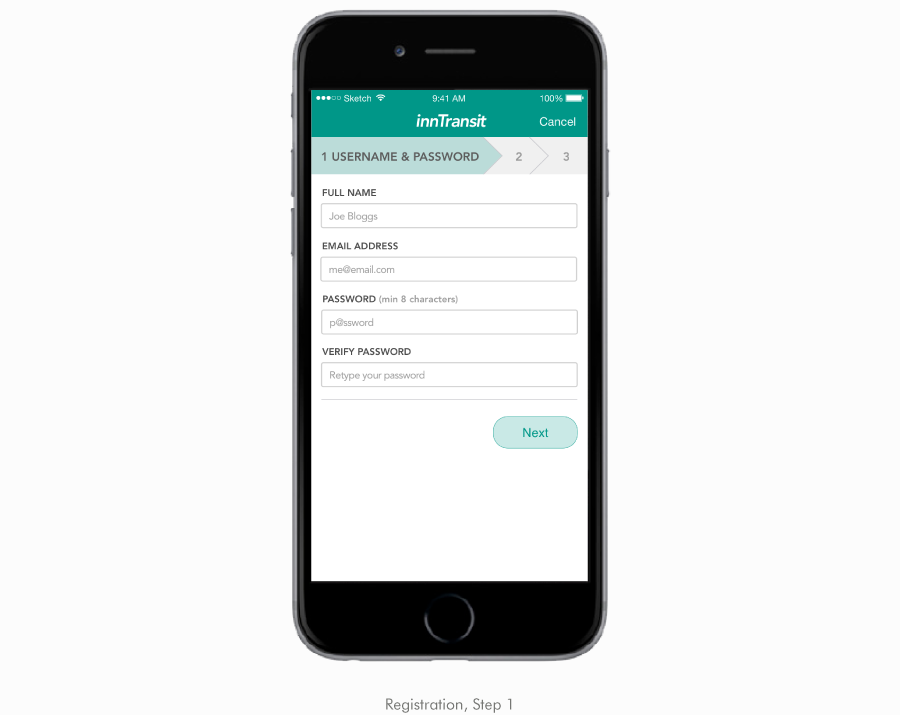
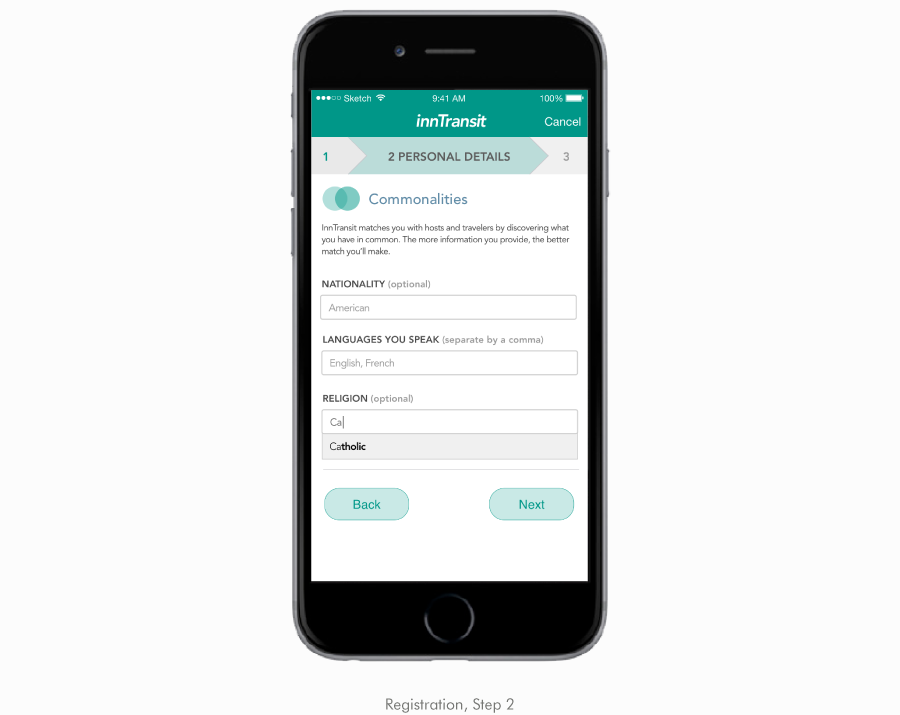

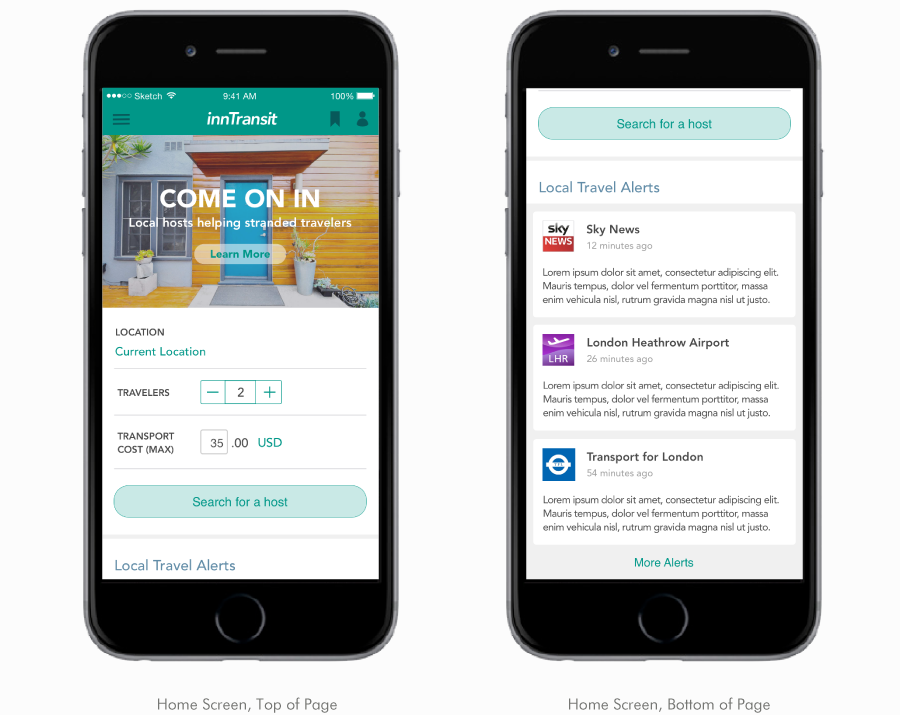
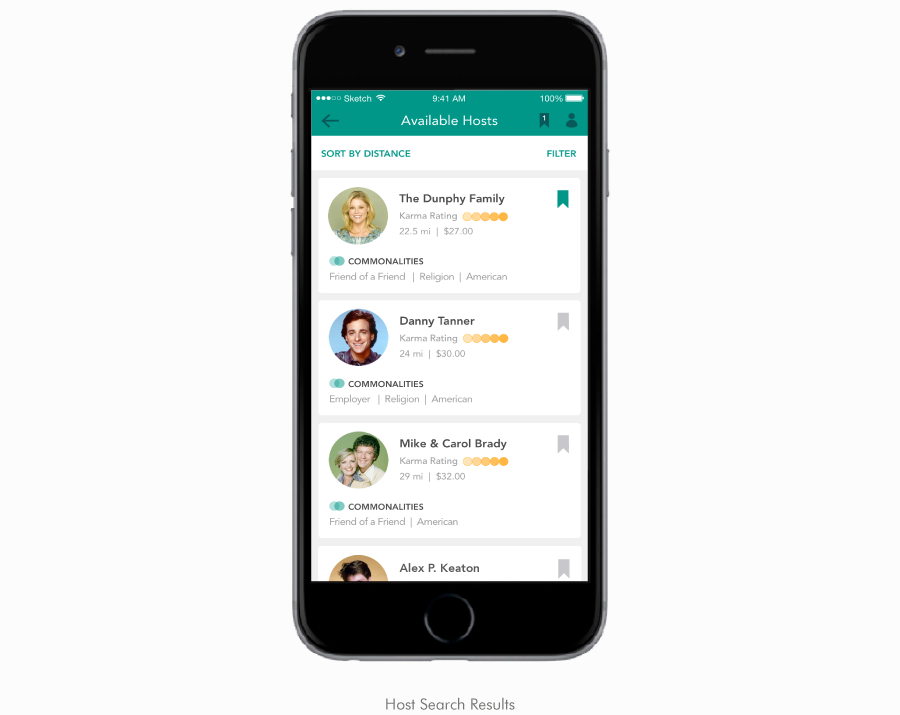

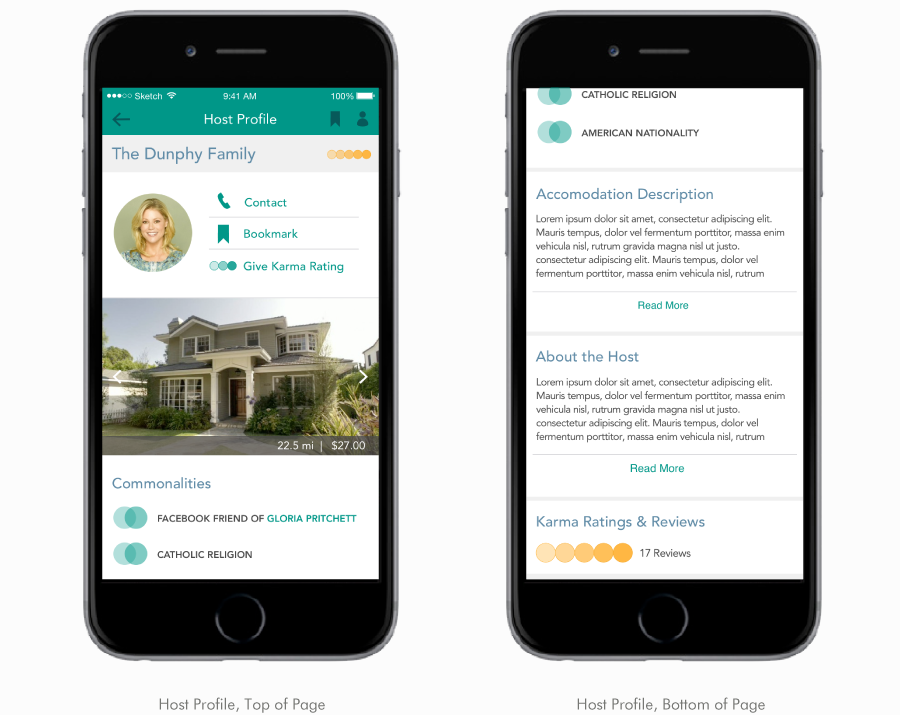
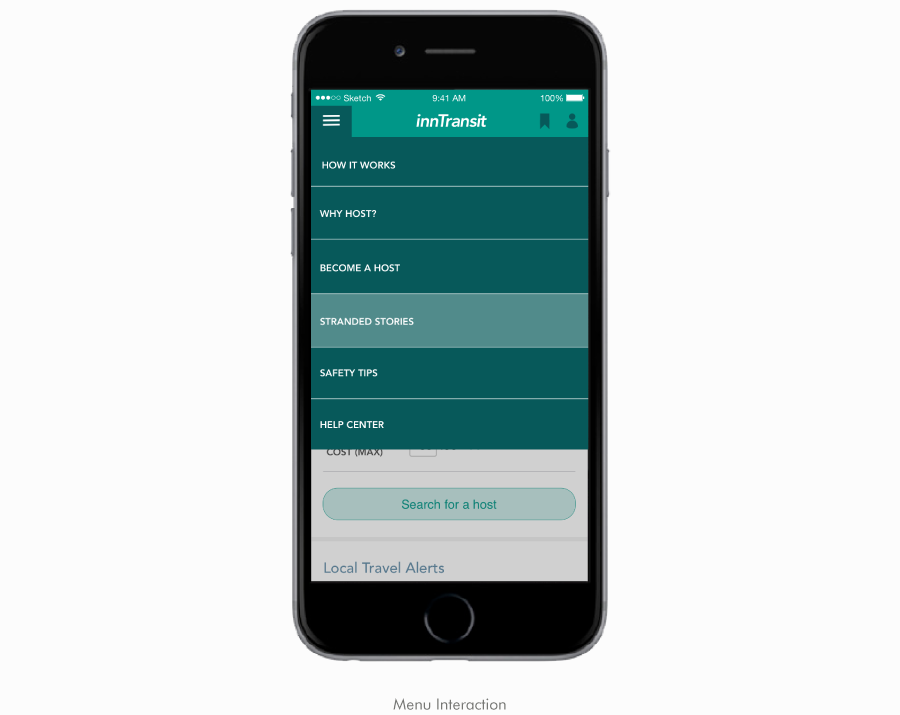
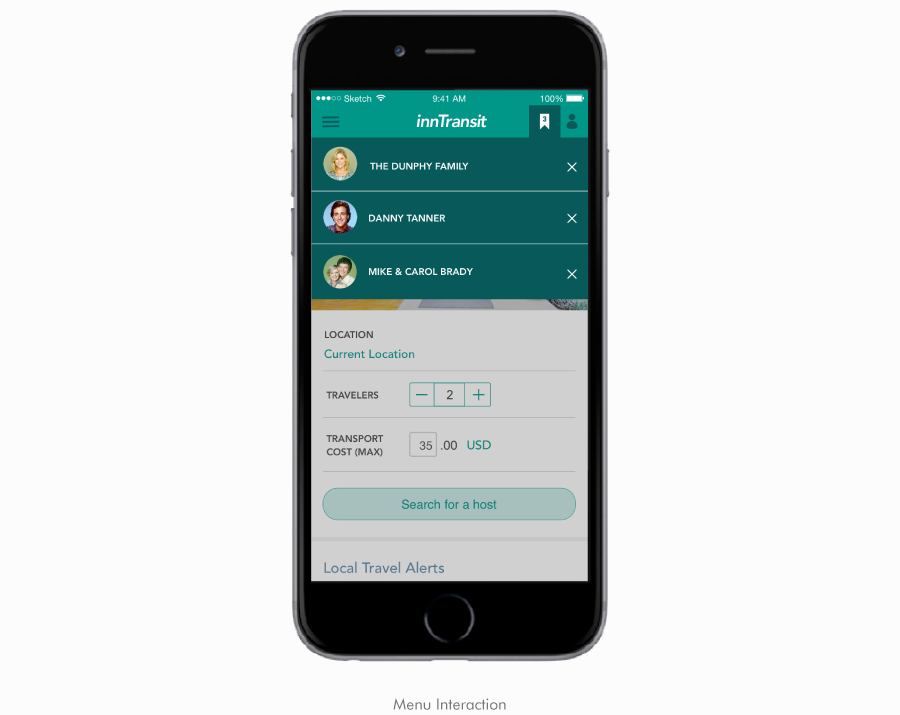
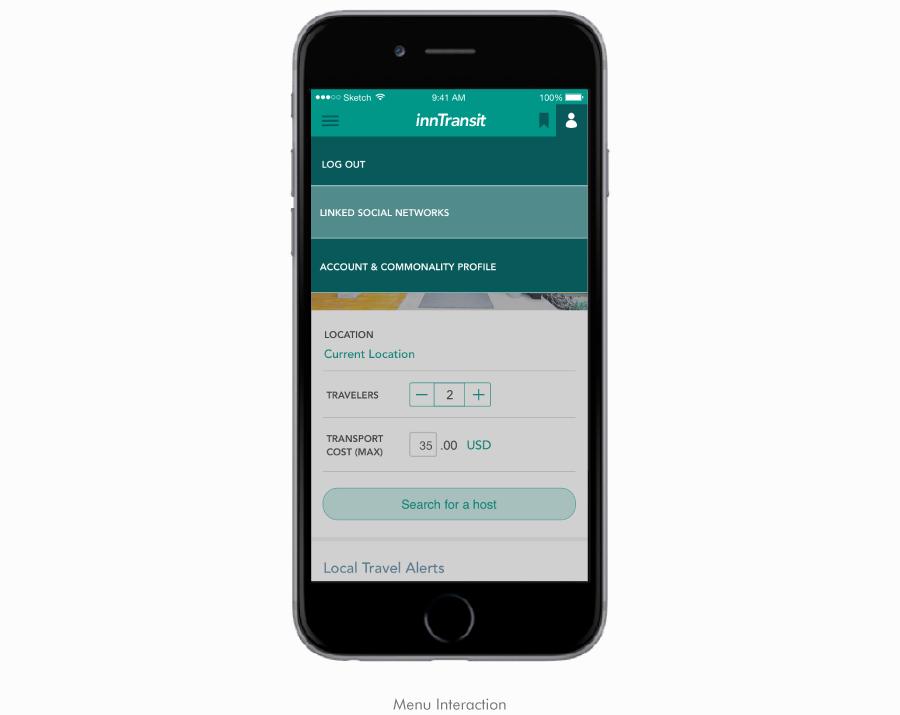
PROJECT DESCRIPTION
I had an idea for a mobile phone application a few years ago. I decided to dust off the idea and design a few screens of the app. I wanted to learn how to use a new design tool called Sketch, and thought this would be a good way to do it. I also wanted to demonstrate my ability to design for iOS7.
Here's the origin story on the app...
My husband and I were living in London and traveling home to Idaho for Christmas. When we arrived at the Heathrow airport, it started to snow. All flights were canceled. I was very disappointed and didn't know when we'd be able to get back to the states to see my family. As we were leaving, the airport quickly filled up with stranded holiday travelers. We went back to our London flat to wait out the storm. We kept our eyes glued to the BBC news channel for weather updates. They were reporting on the closure of Heathrow and interviewed passengers who were preparing to spend the night on the floor at the airport. Hotels in the area were fully booked, and the travelers had nowhere to go. I told my husband, "Wouldn't it be great if there was a way for these passengers to find families to stay with?" So, I decided to design a mobile app that would connect stranded passengers with local host families.
What's unique about the app is that it finds common ground between people, making it a little bit easier to meet and trust a stranger. The app gathers host and traveler information and syncs with their social networks to find commonalities like friends, employers, religion, nationality, etc.
The user starts with the registration process, which sets up an account, gathers personal information, and links with social networks. Then, they can search for a host by submitting their location, number of travelers, and maximum transportation cost. They are then shown available hosts that meet their search criteria and commonalities. Users can select the host to review their profile. From there, they can contact the host to make accommodation arrangements. The app includes other features such as Karma points, ratings, and reviews; local travel alerts; stories from stranded travelers; host bookmarking; safety tips; and host accounts.
PROJECT: MOBILE ON-DEMAND DELIVERY, GROUP ORDERING SYSTEM
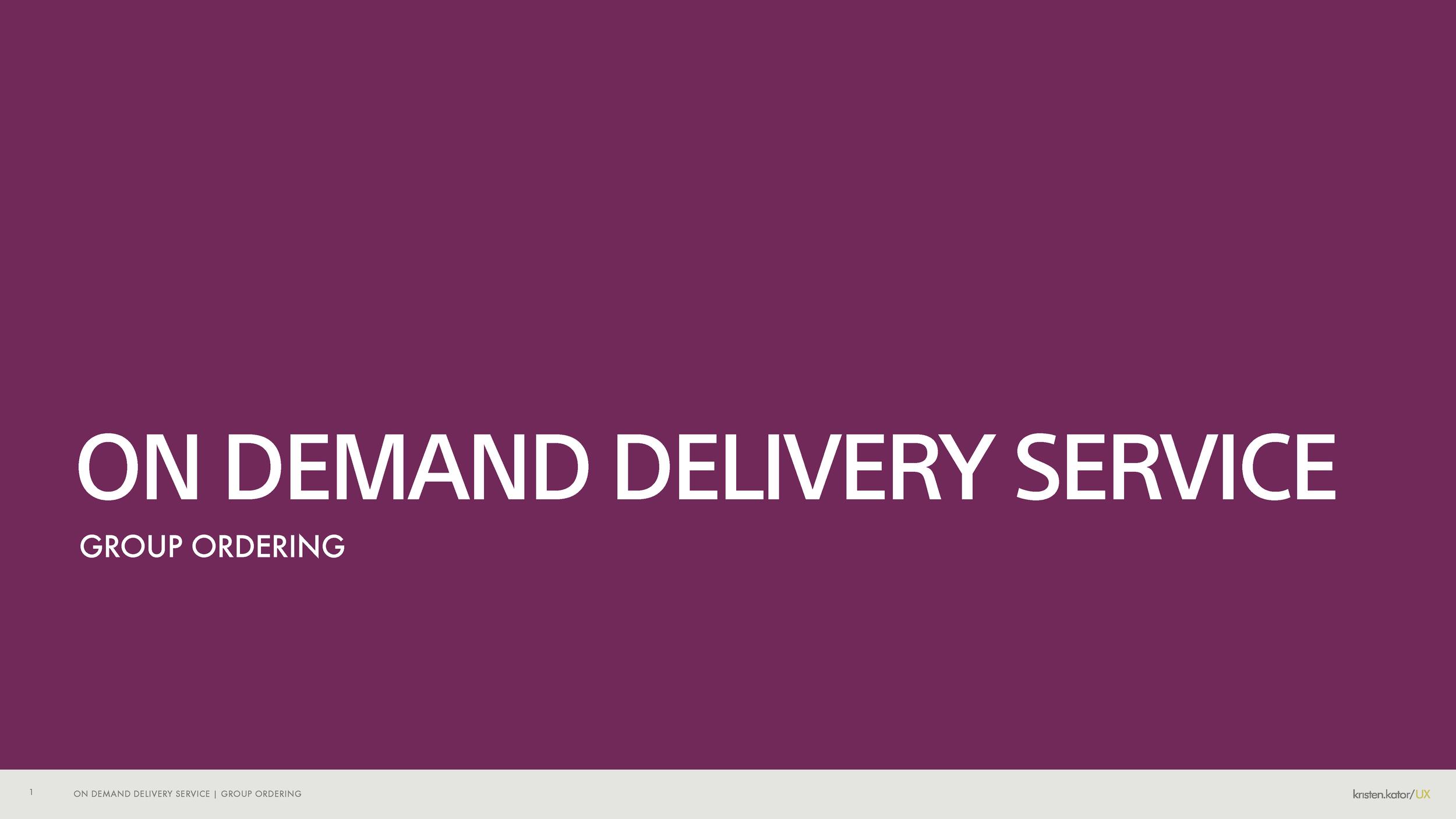
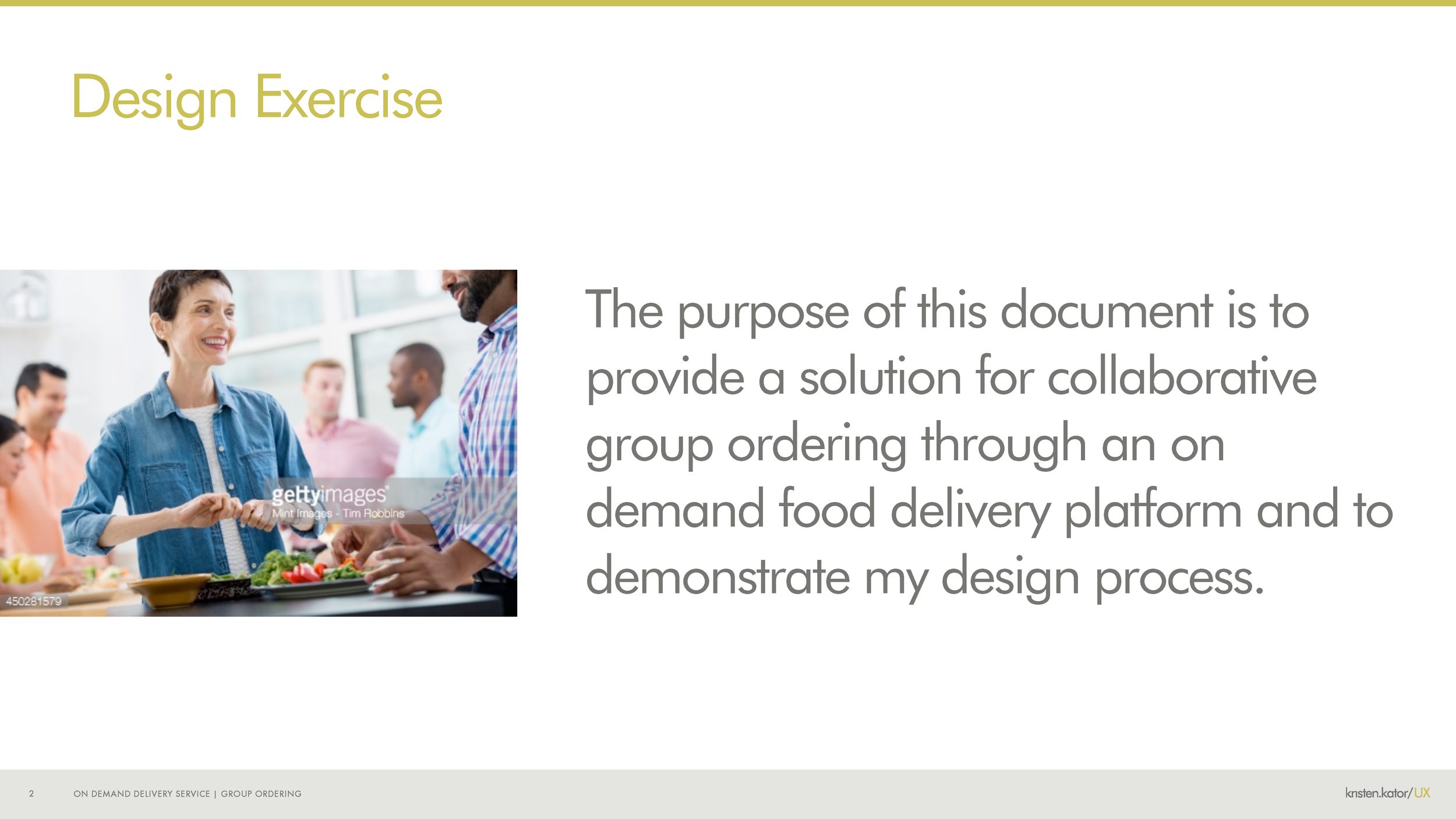
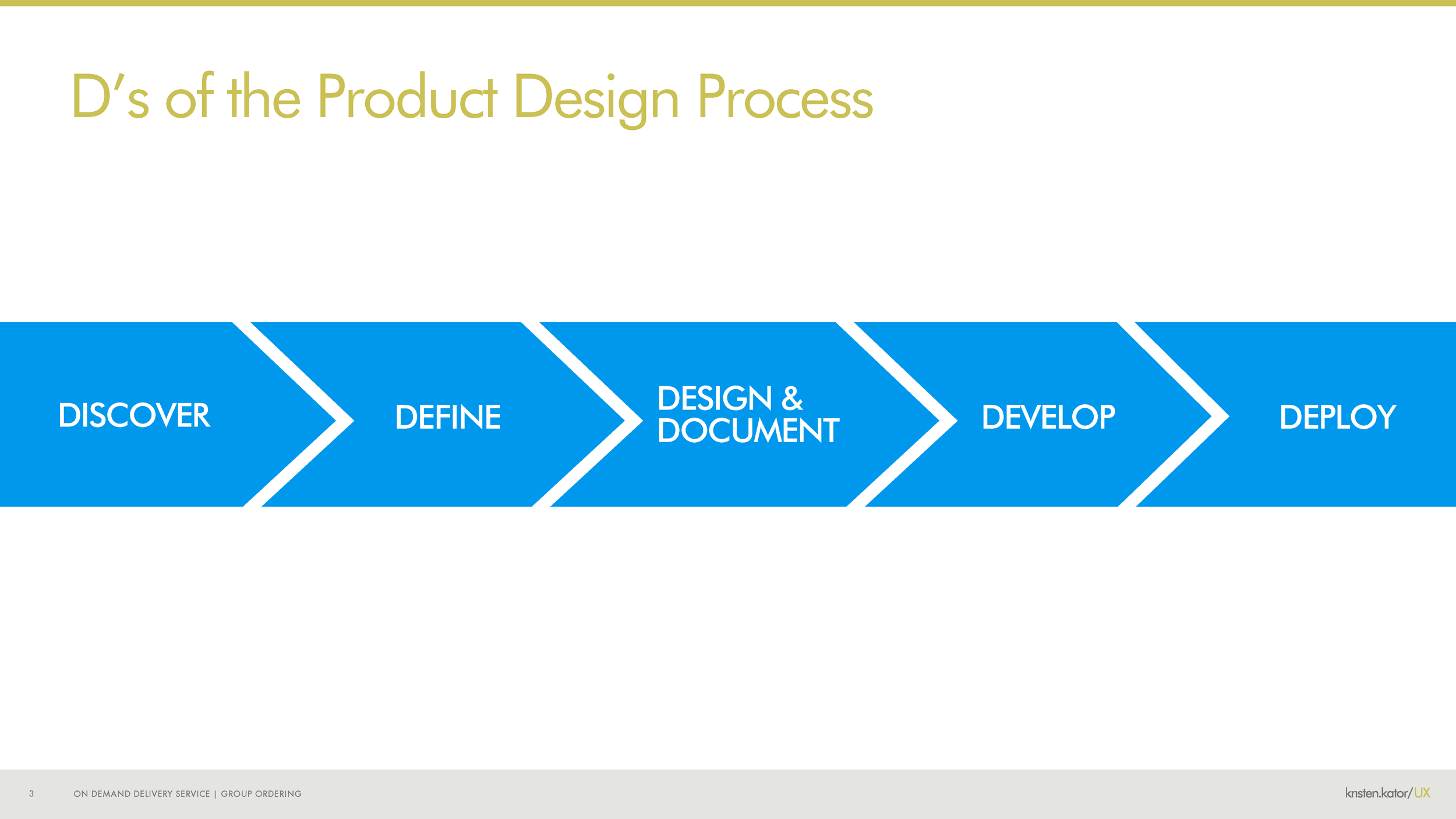
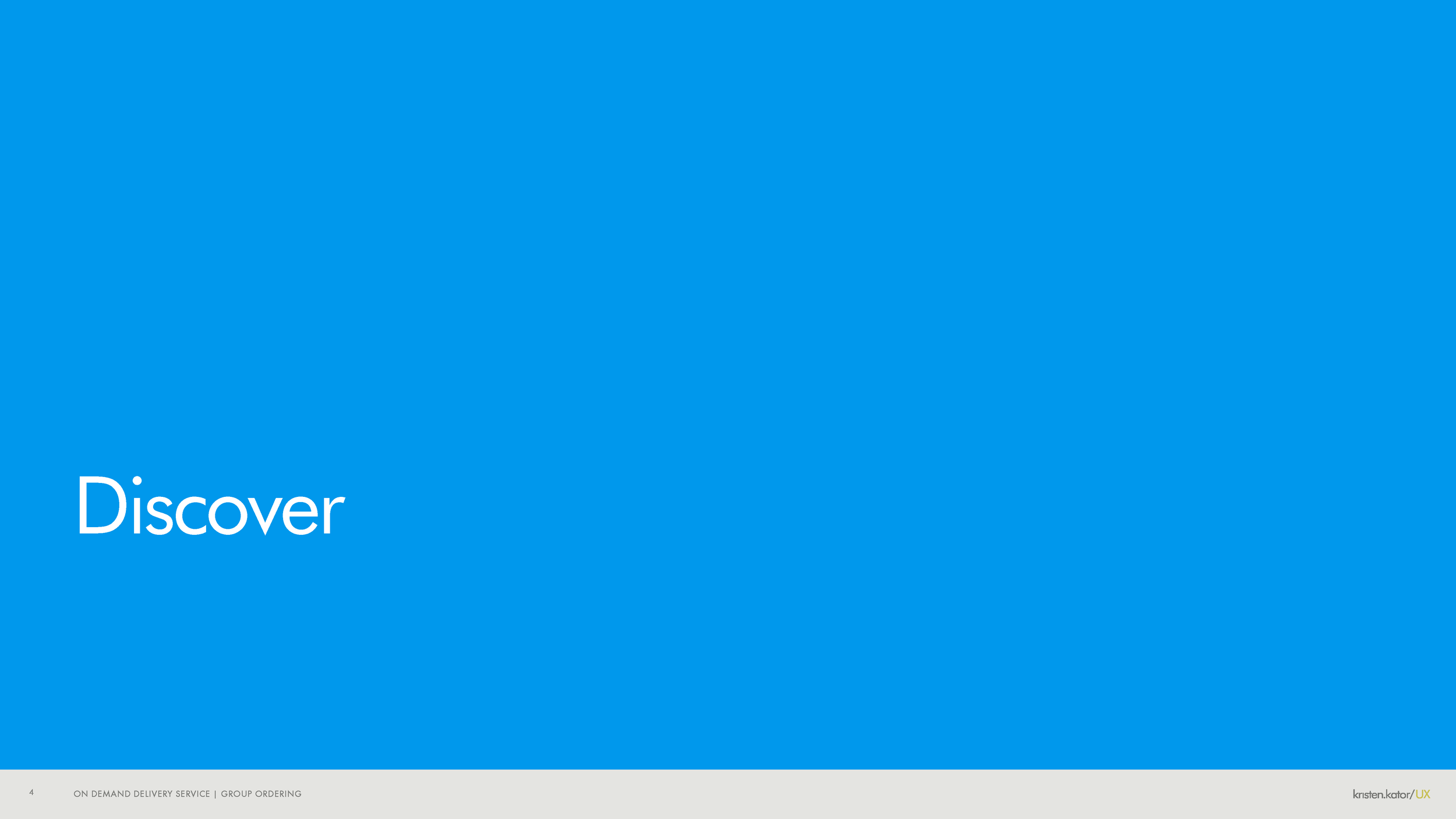
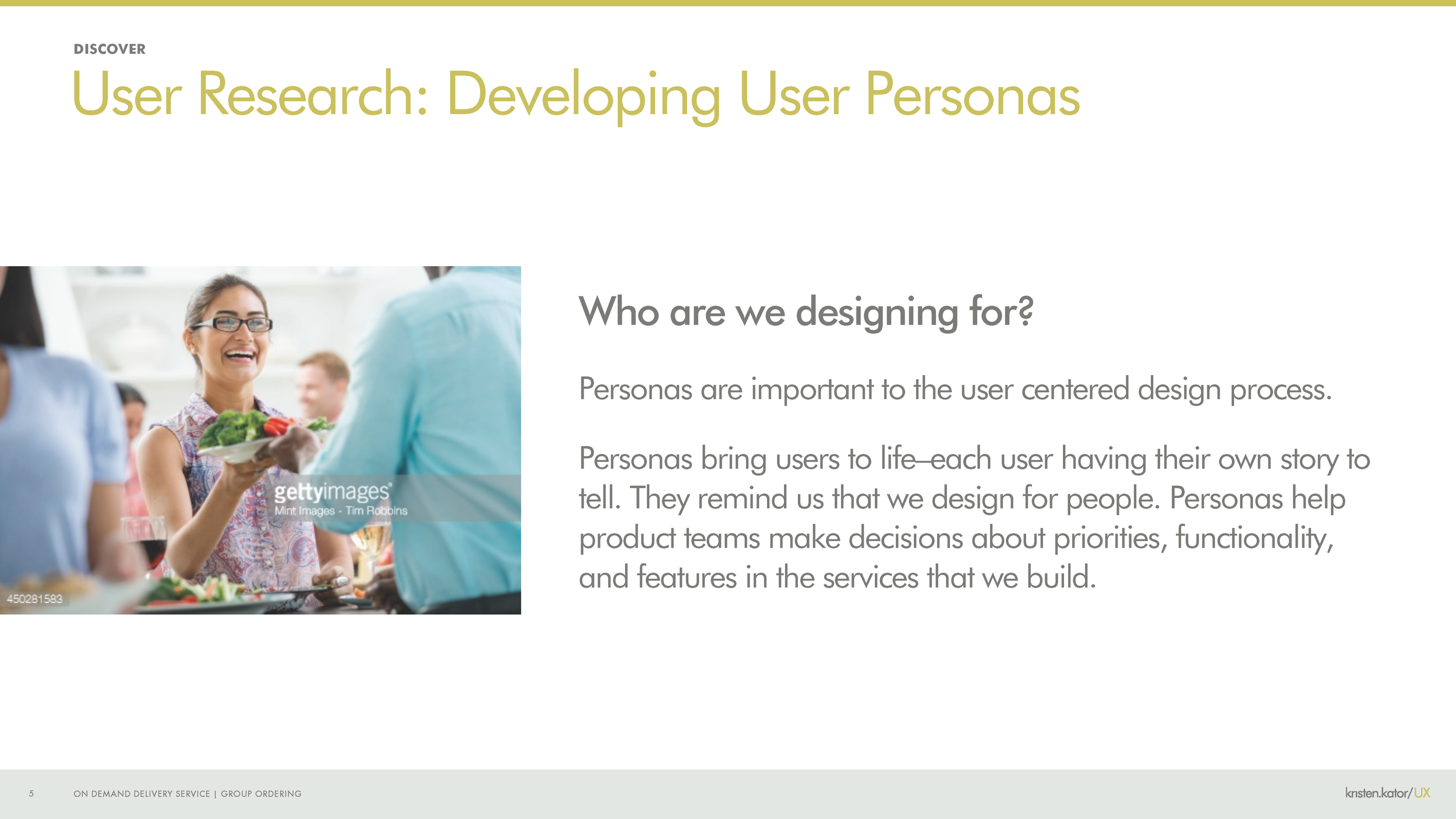
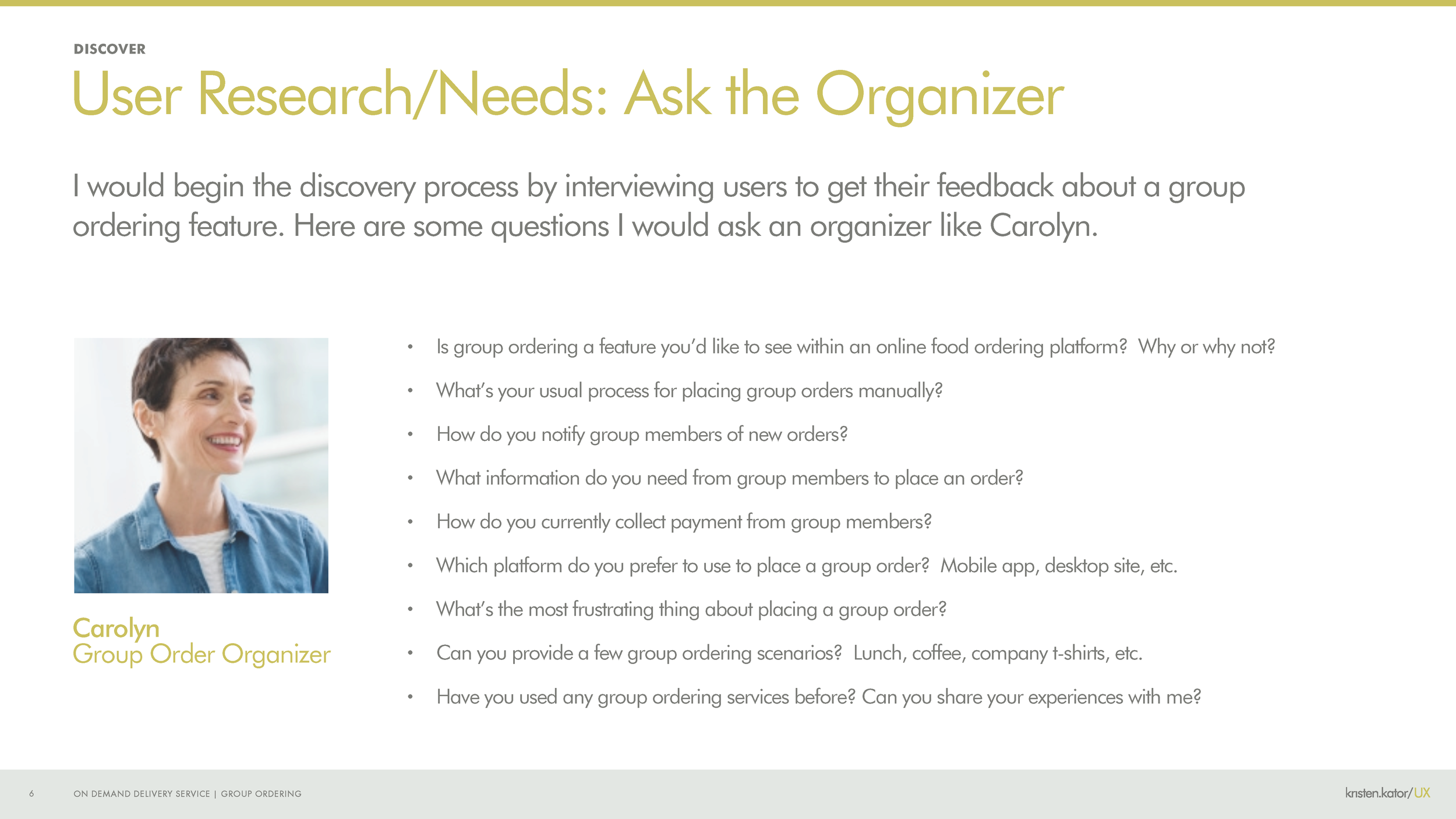
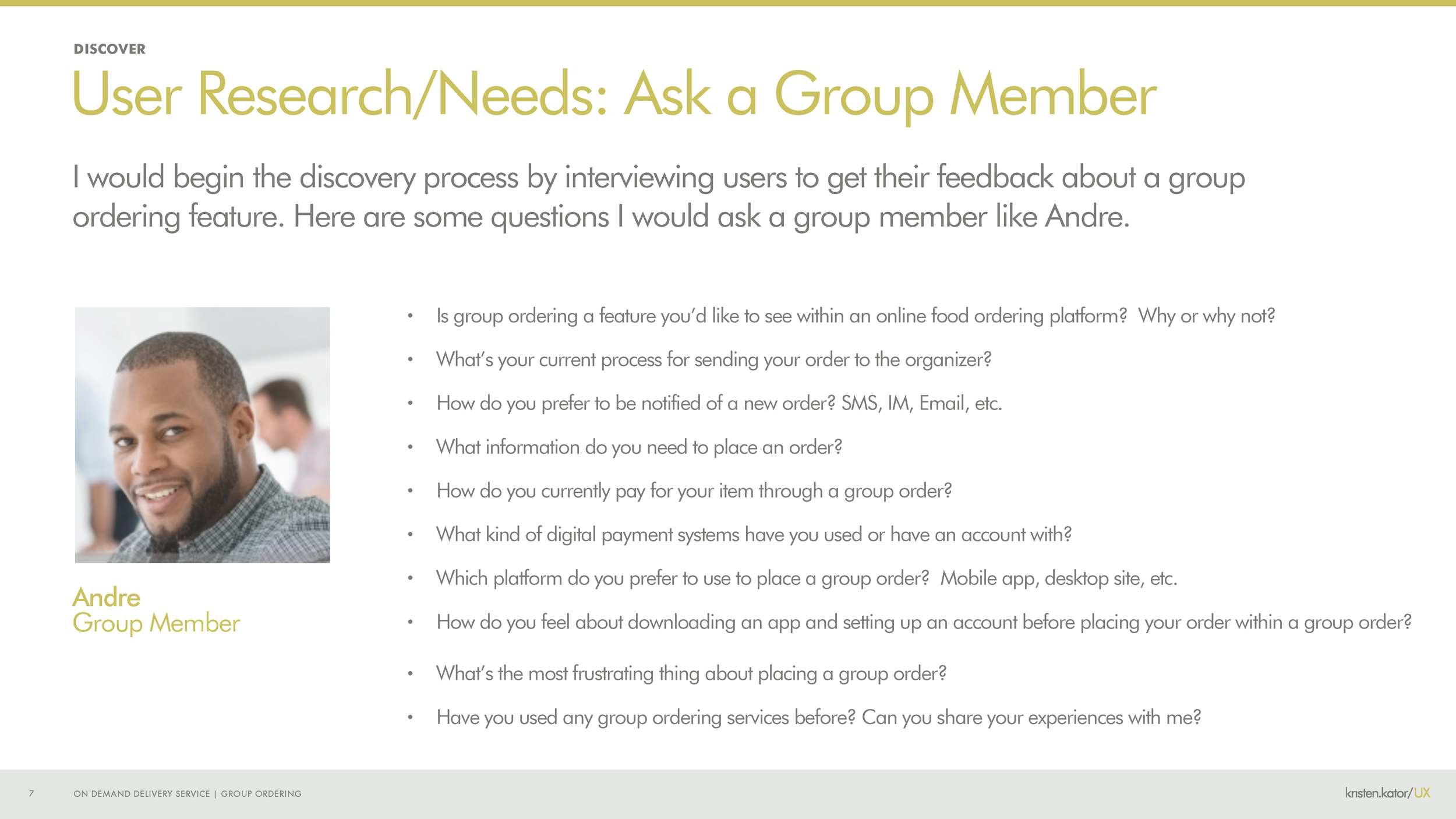

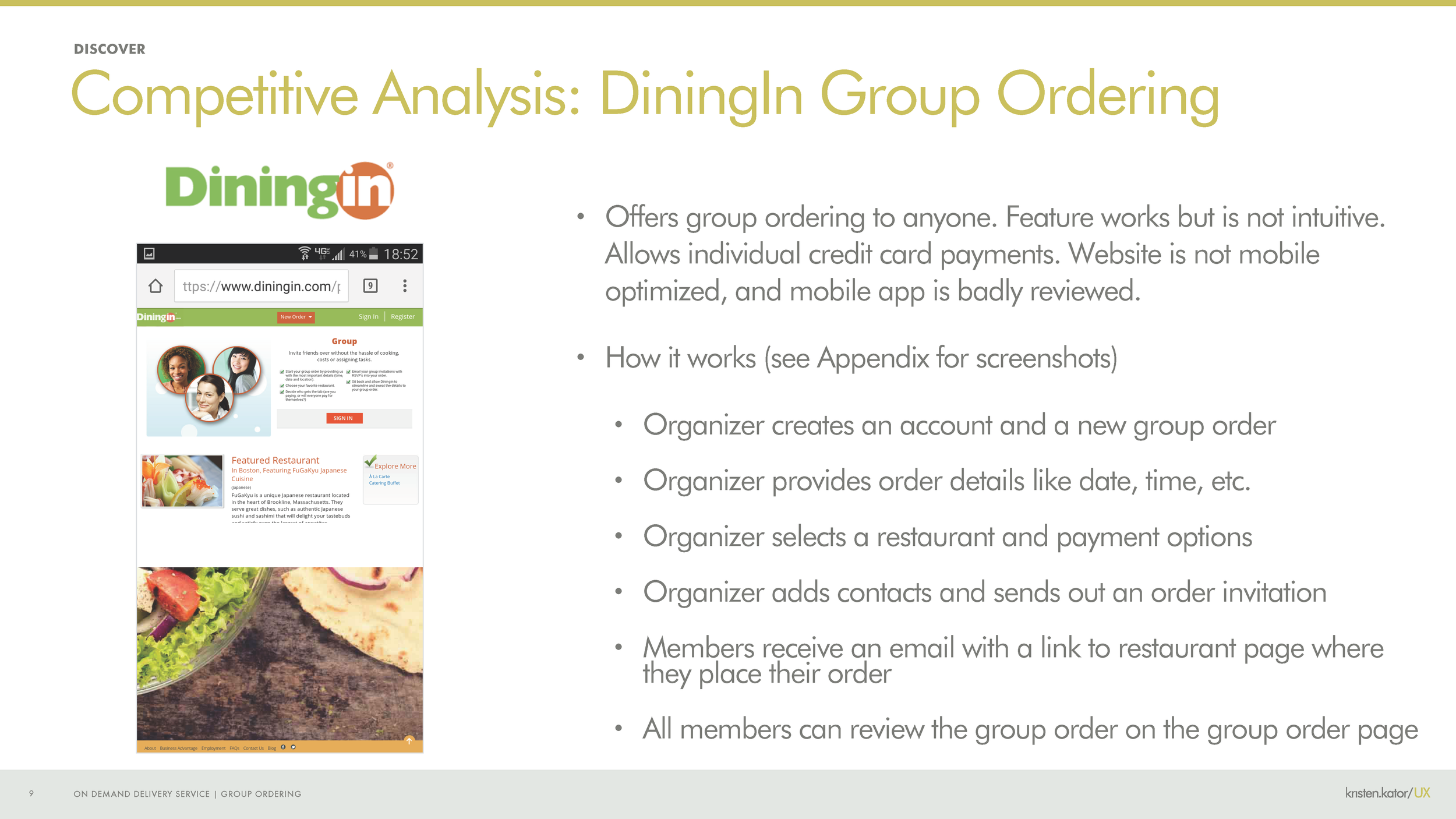

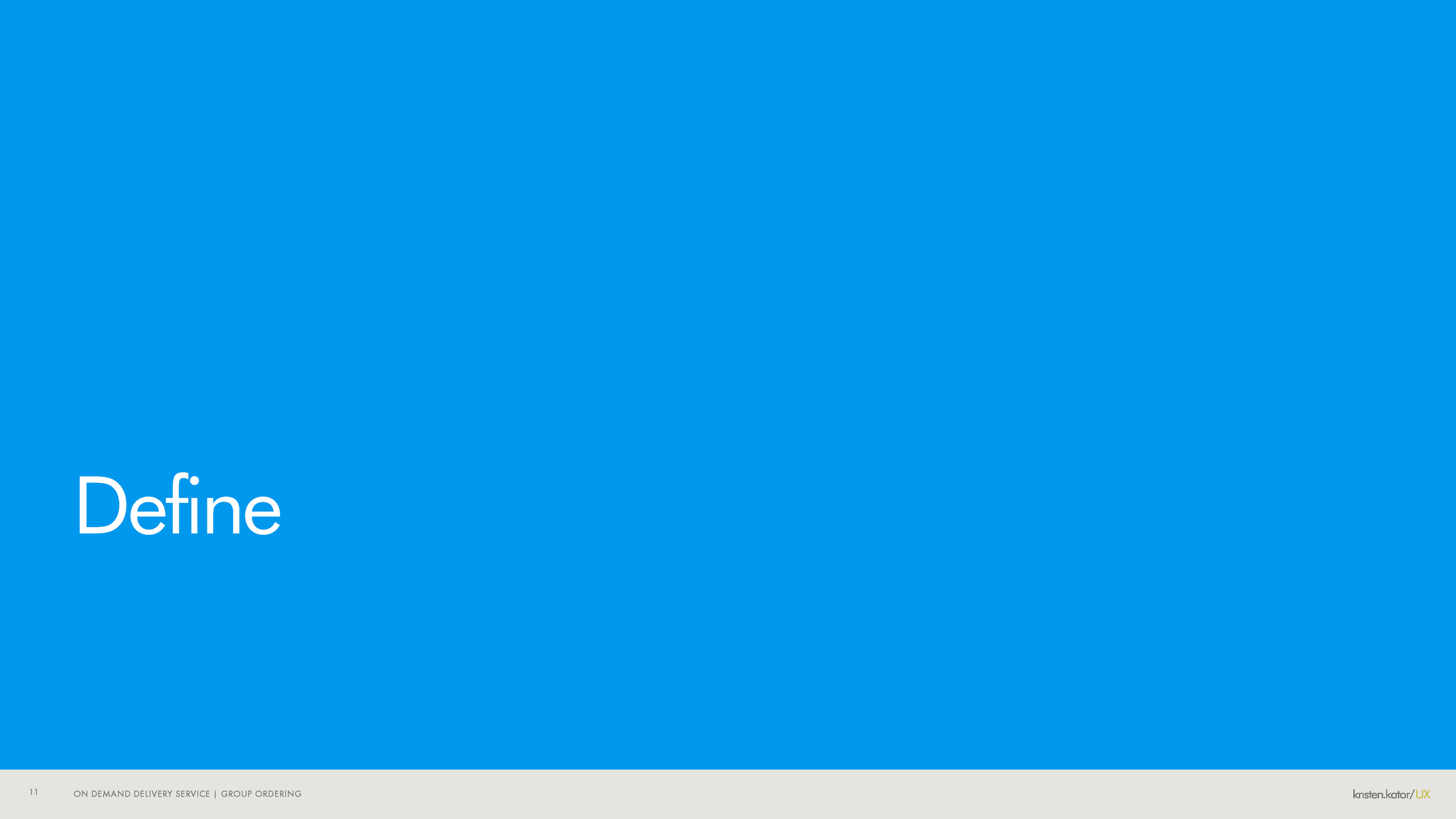
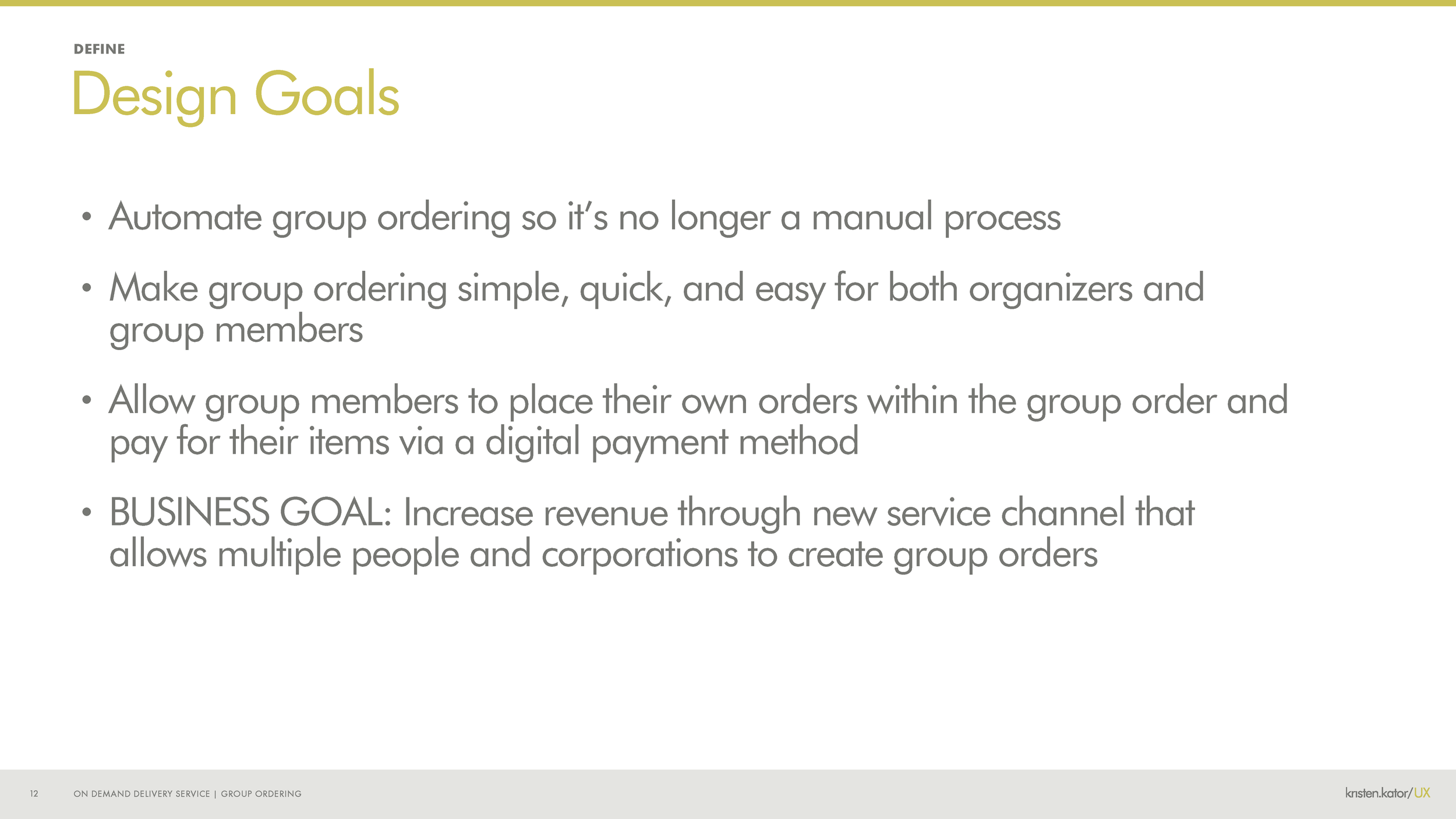
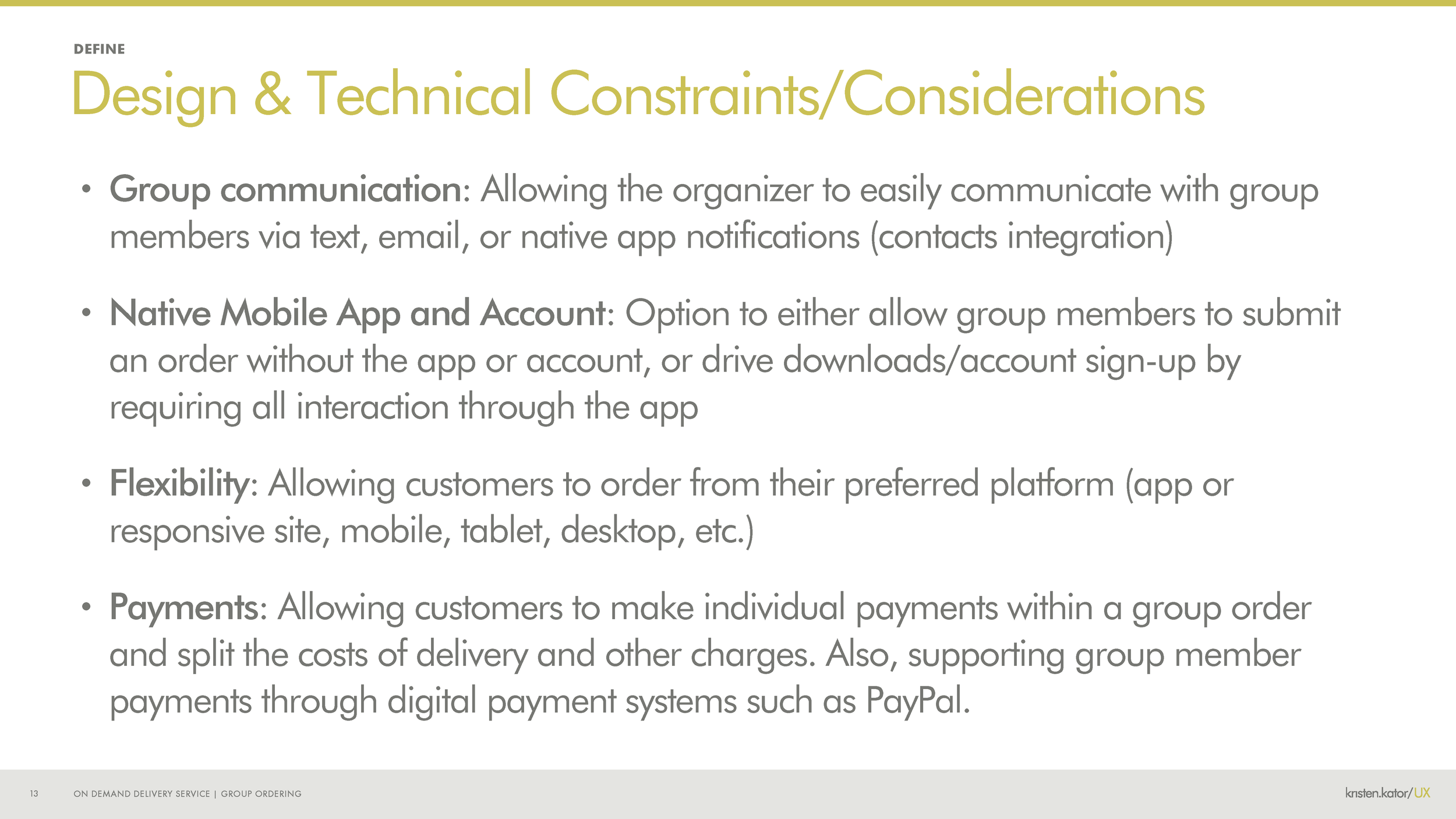
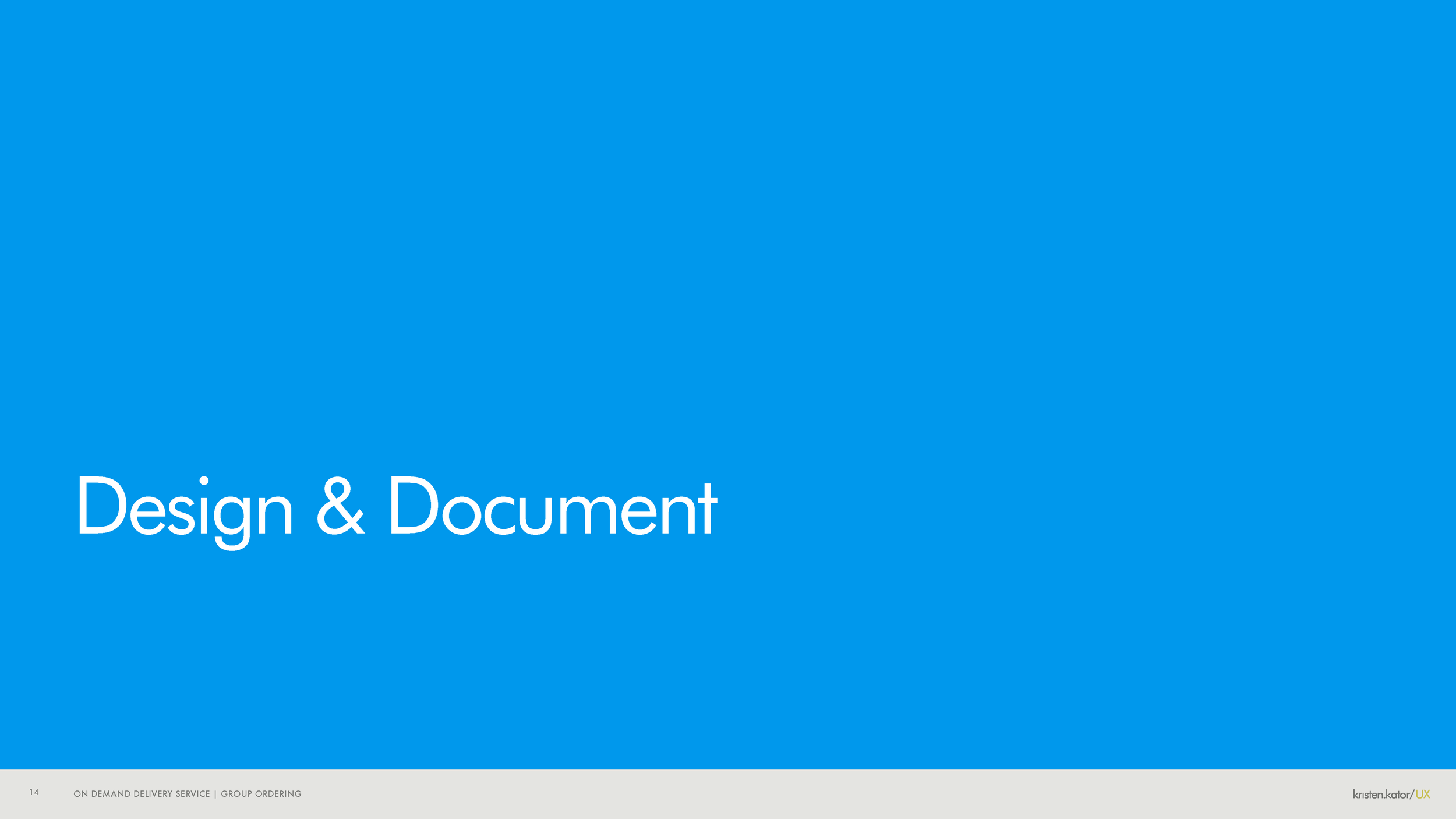
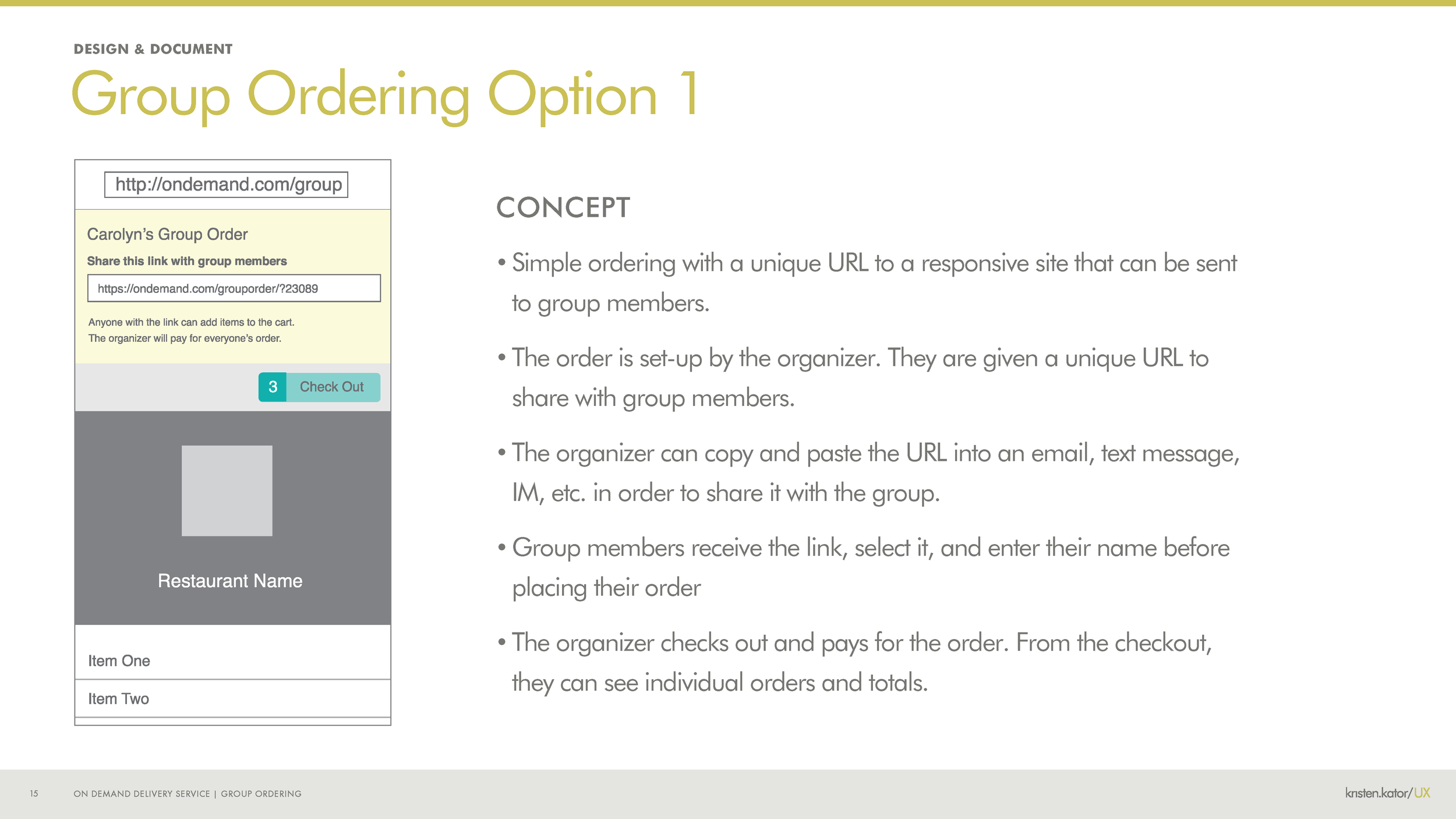
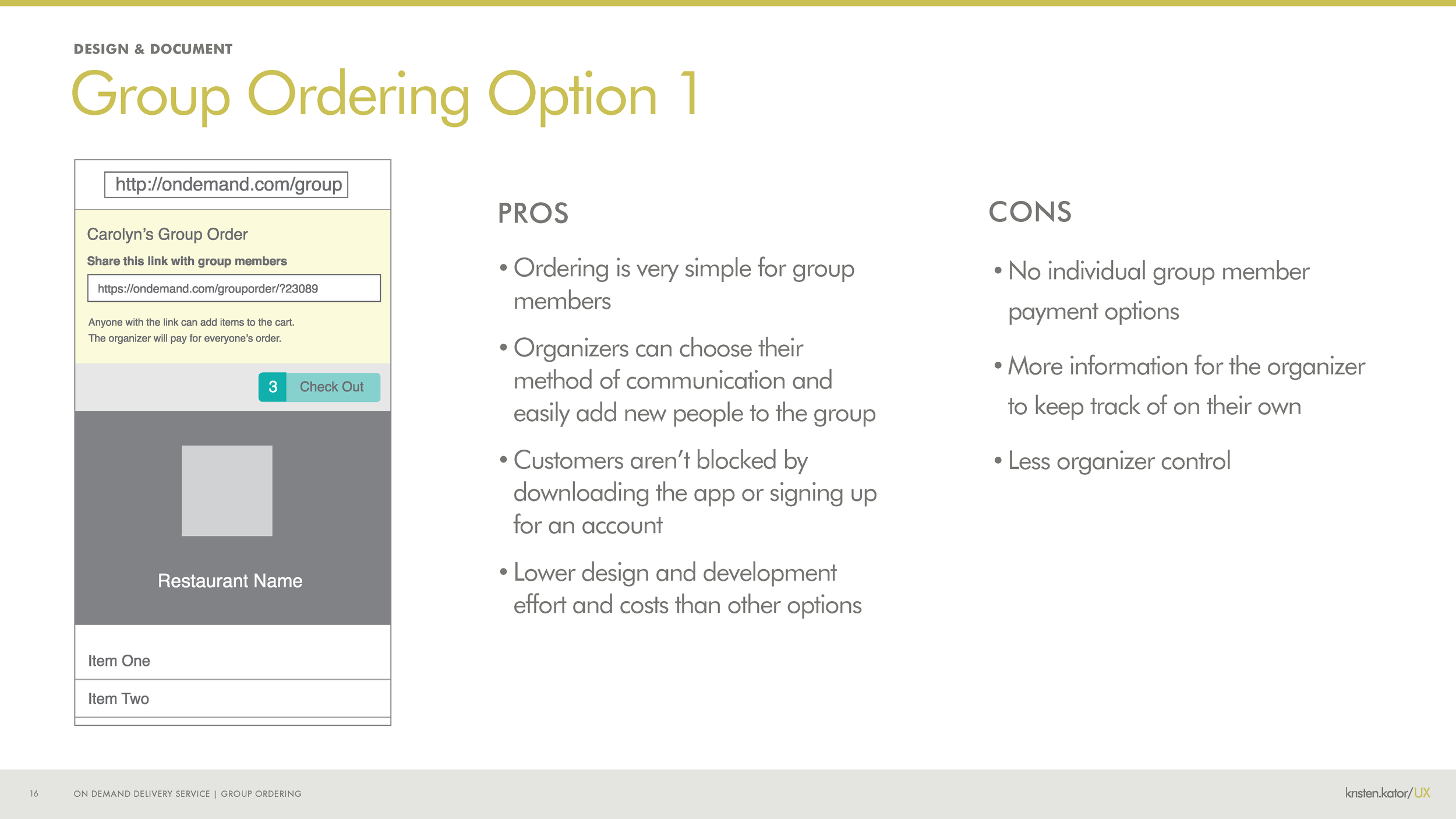
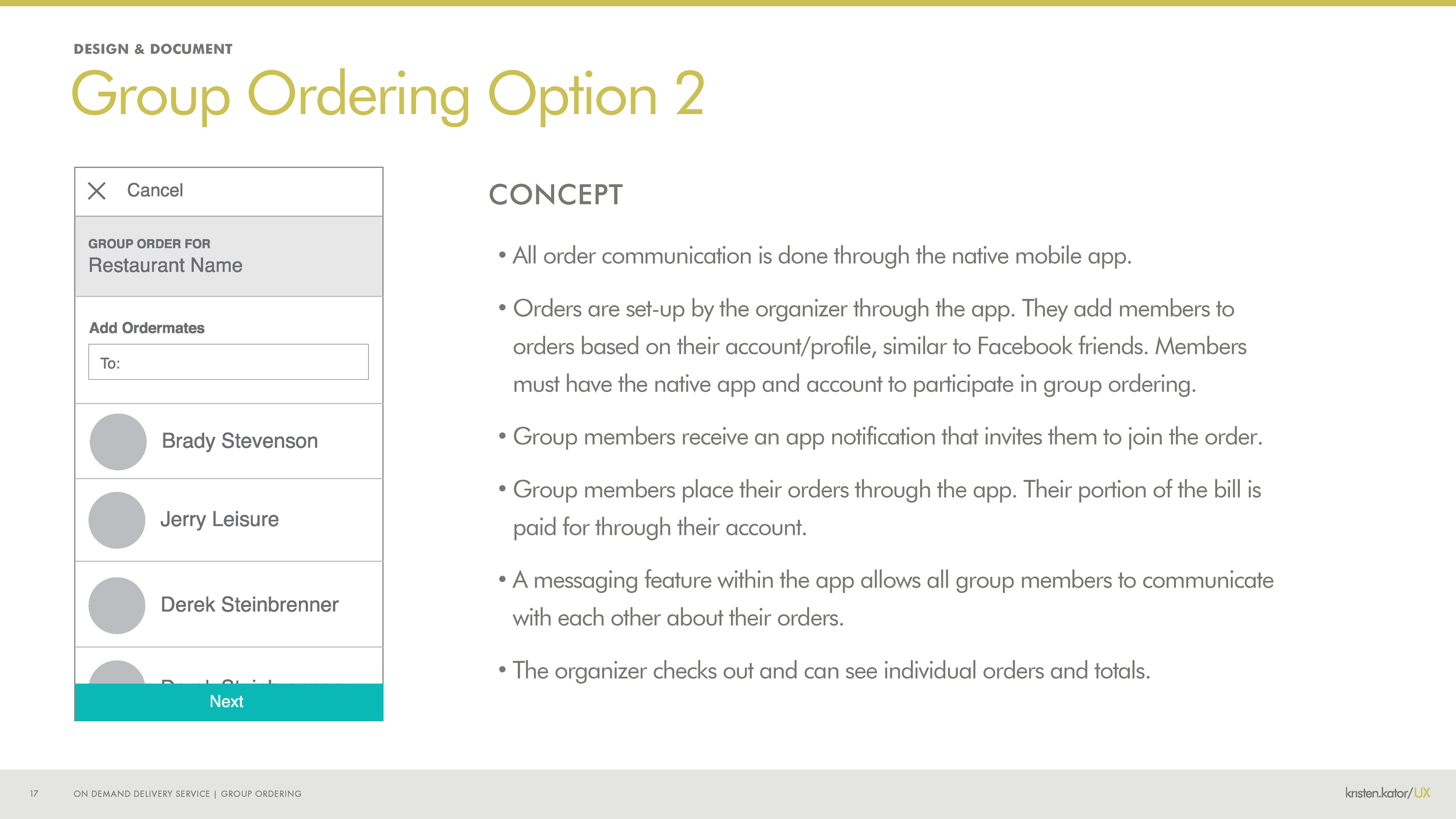
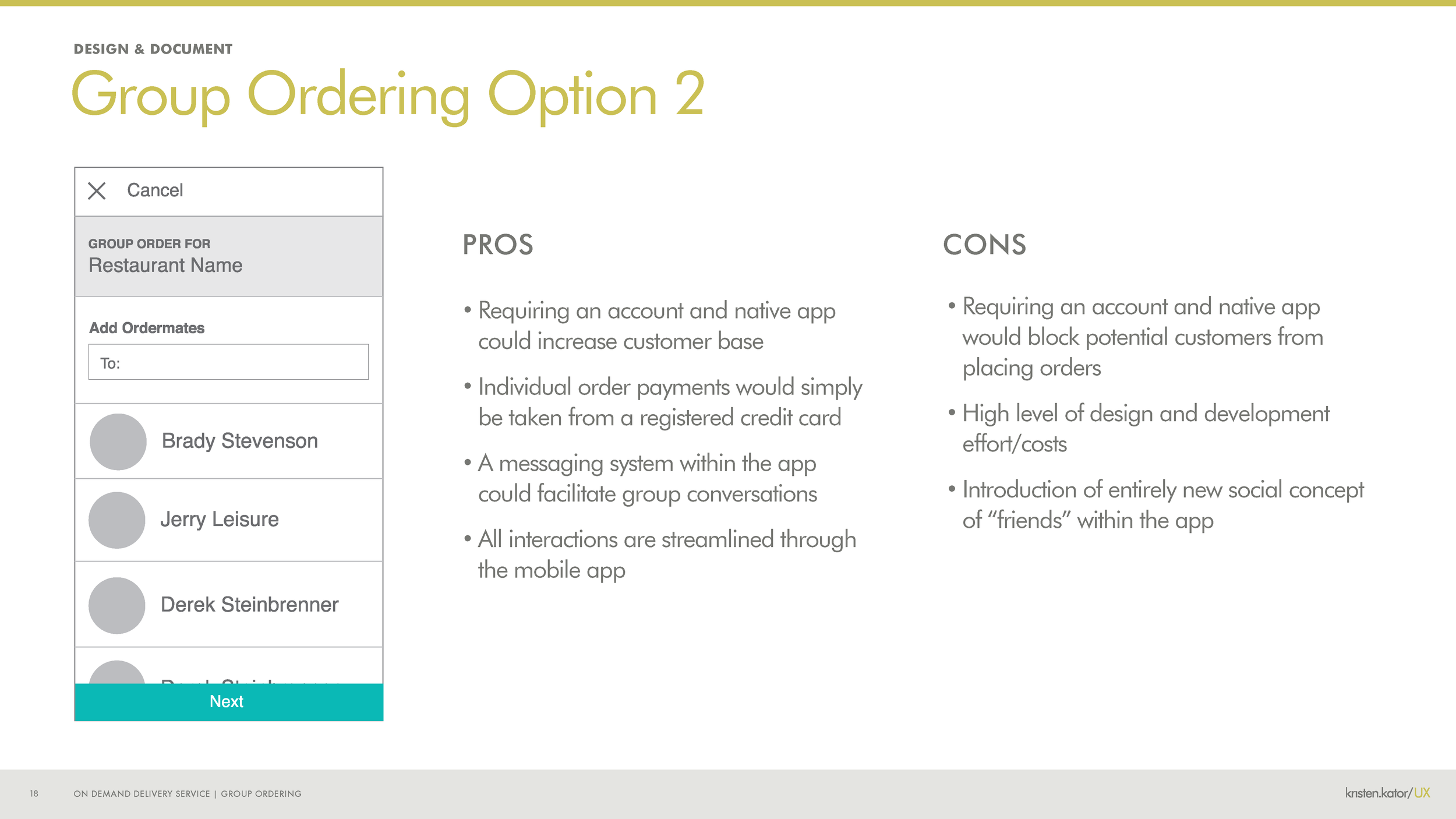

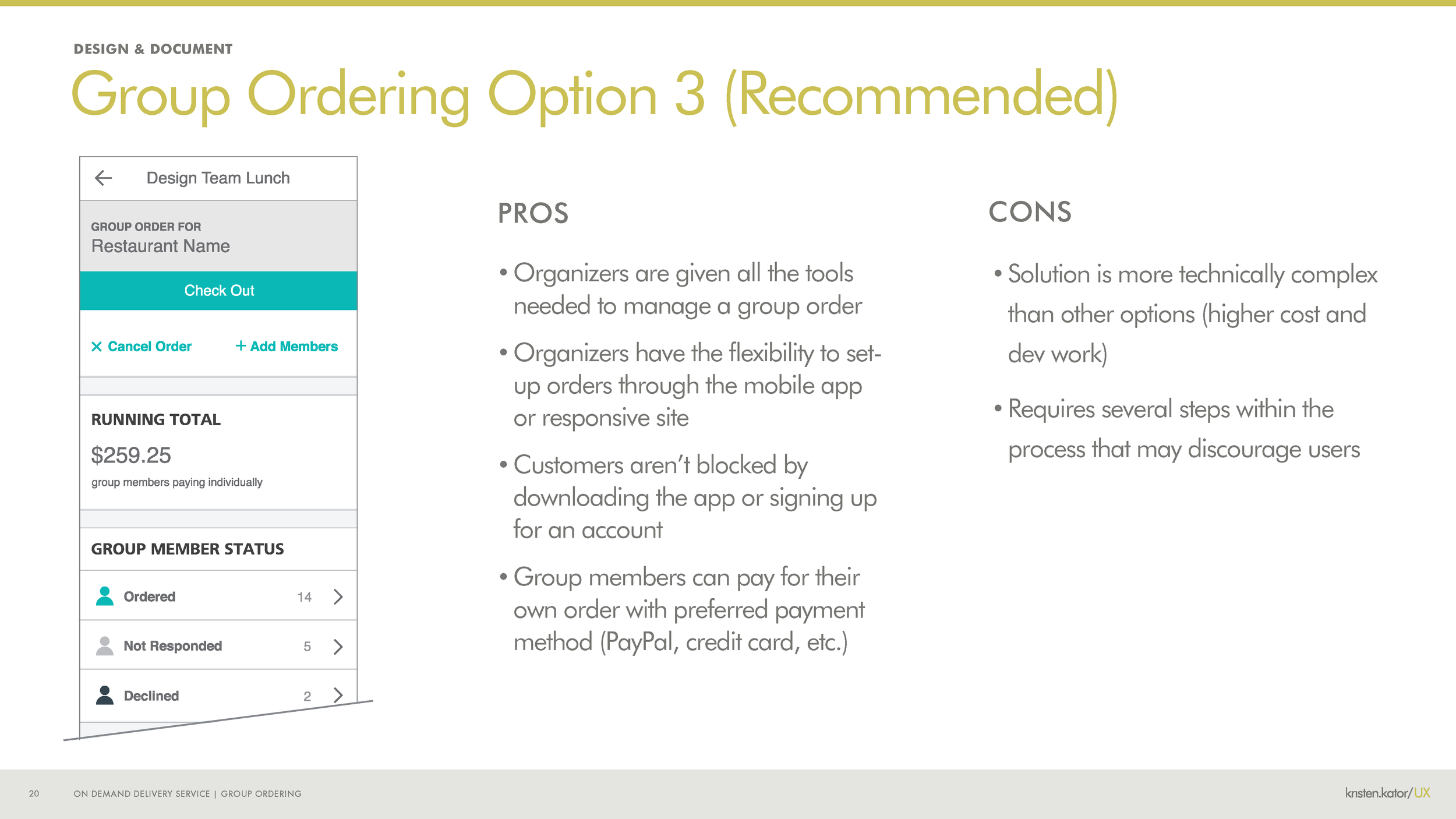

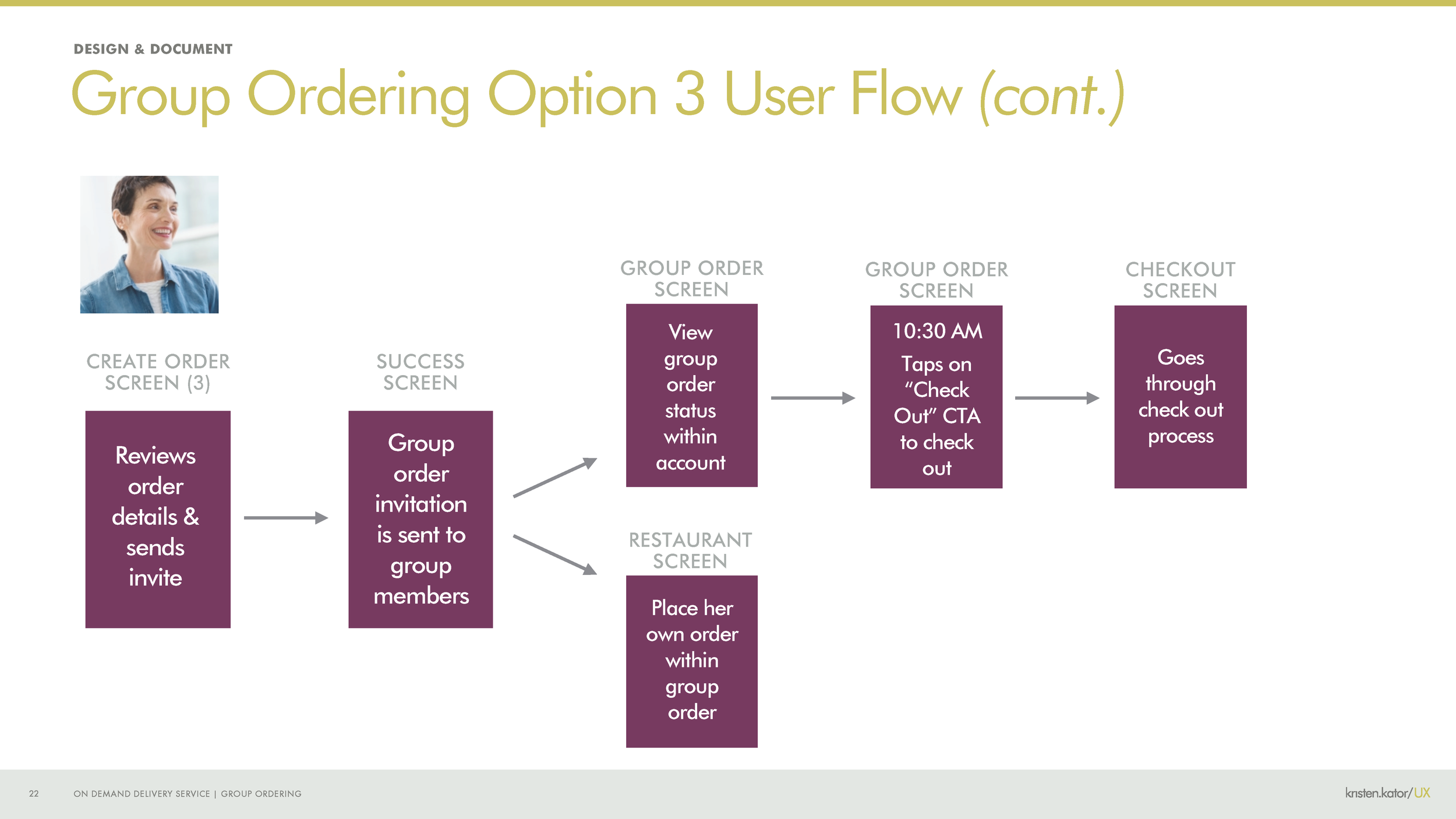
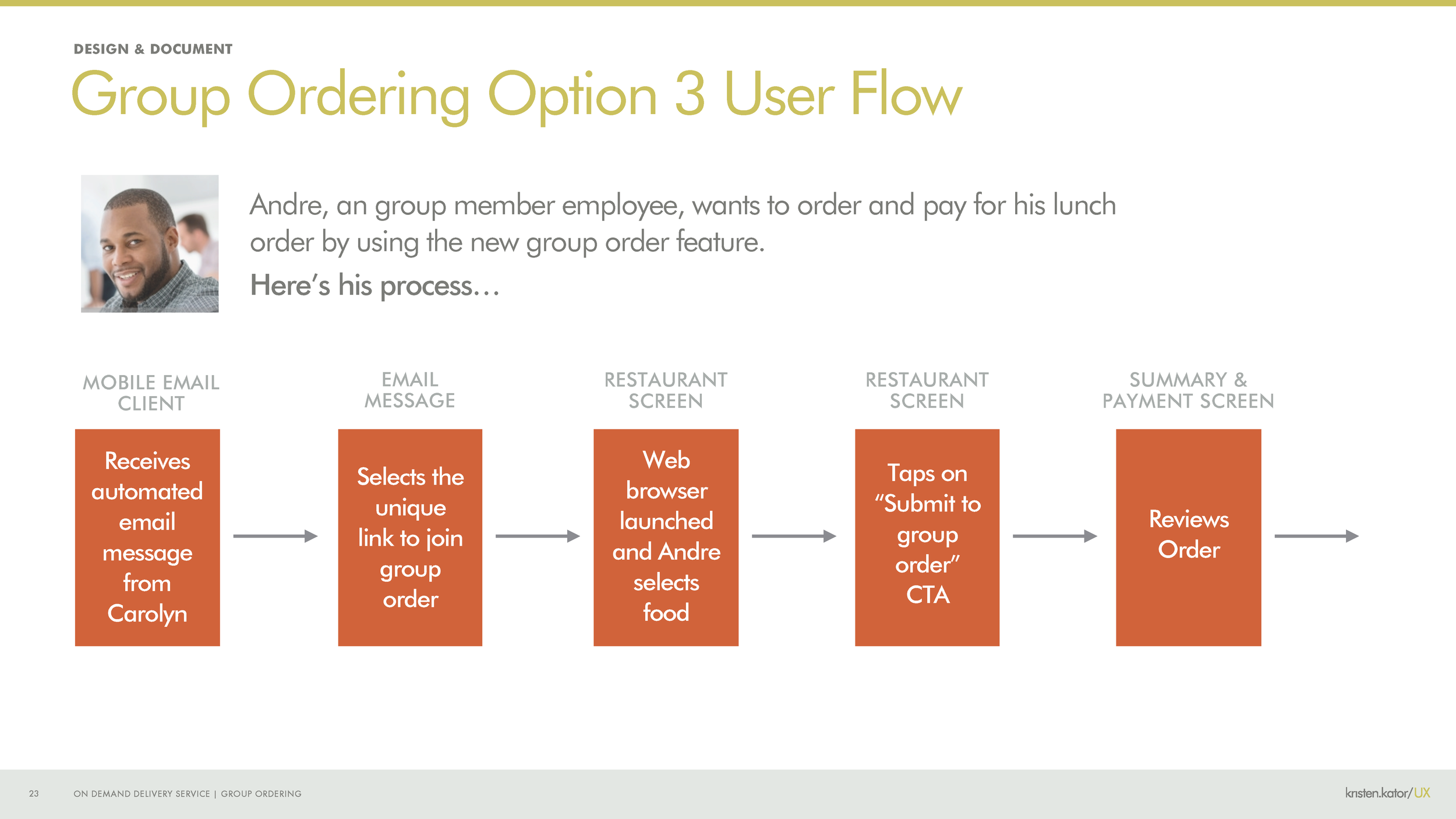
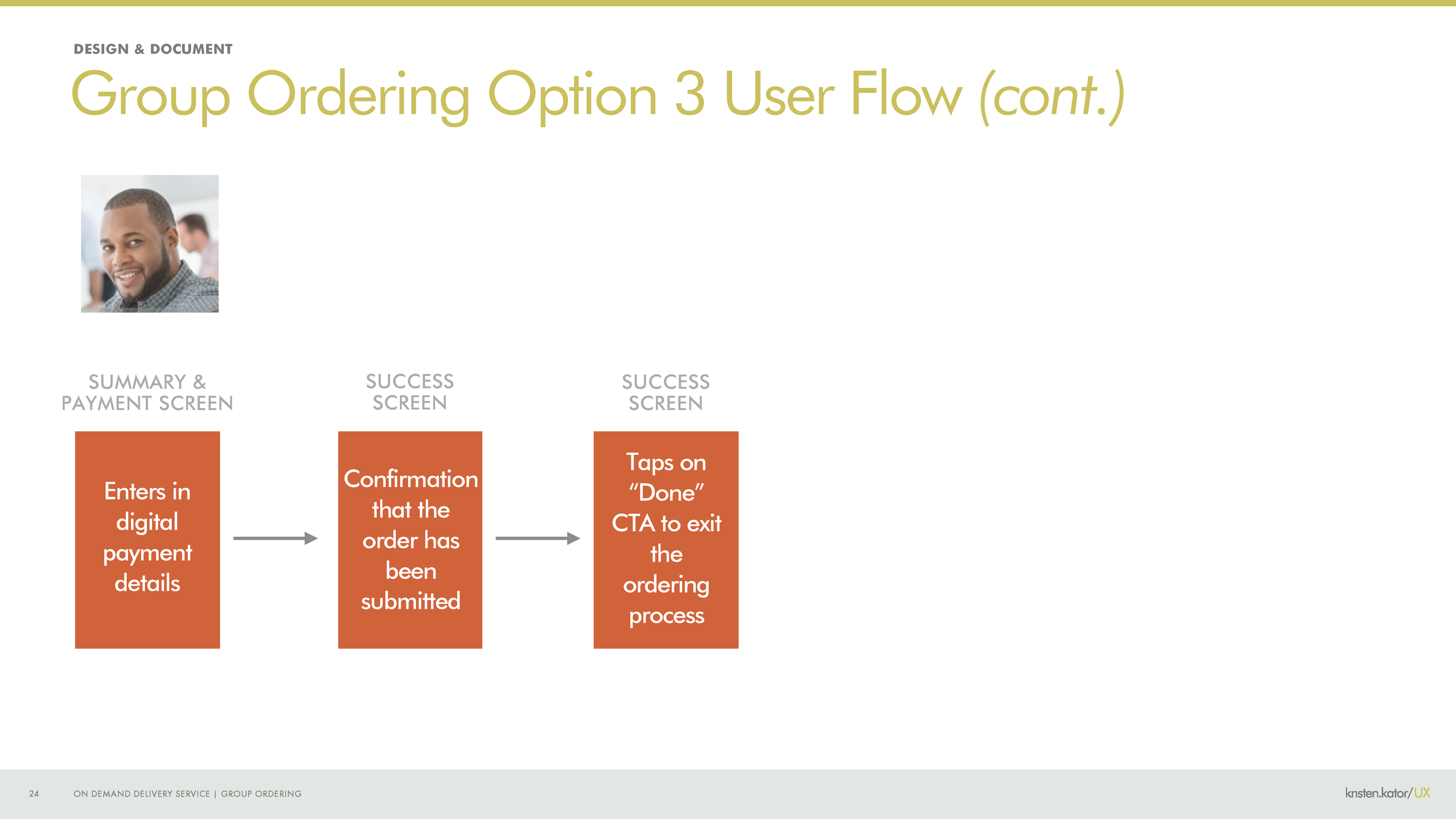
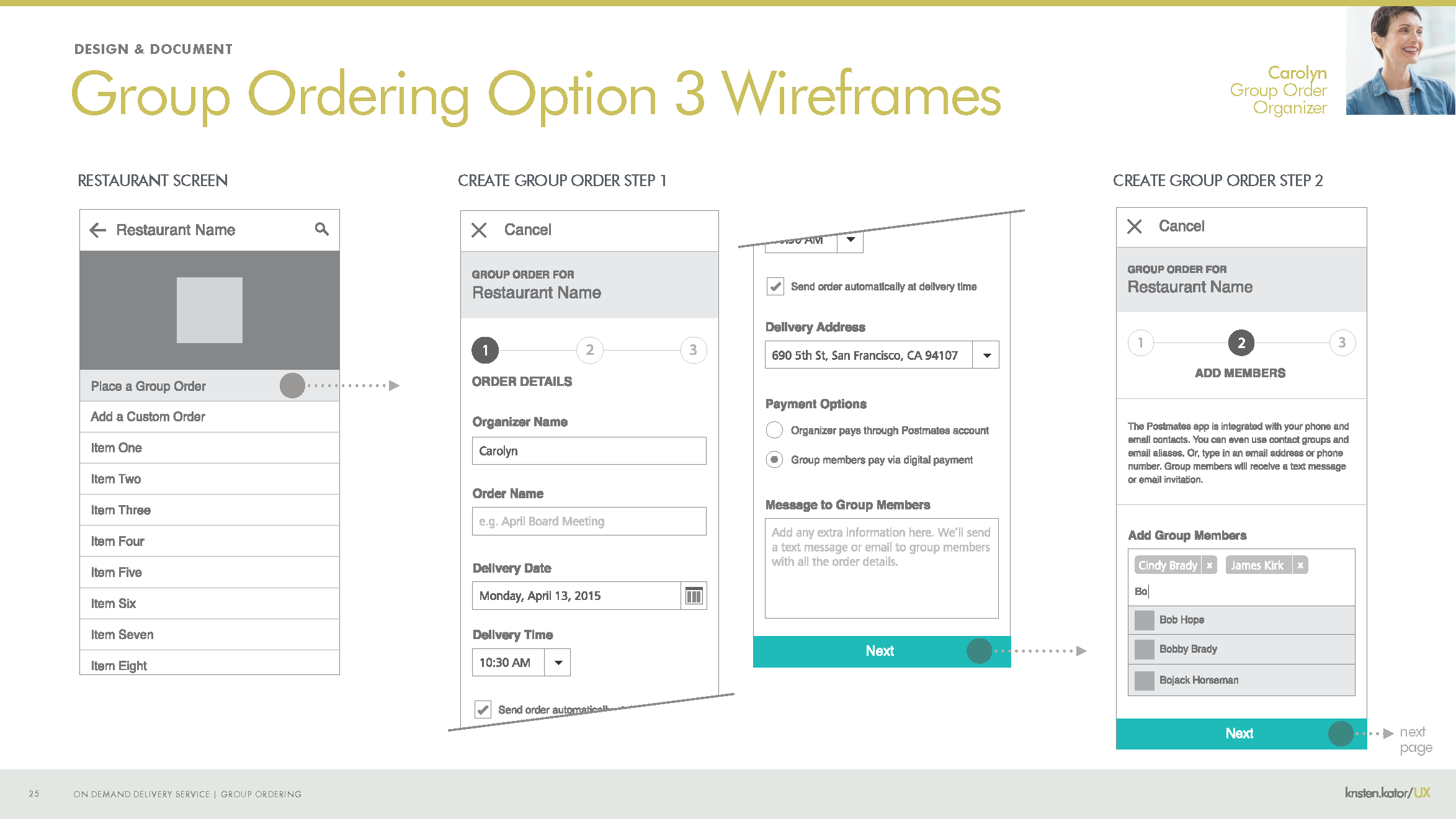
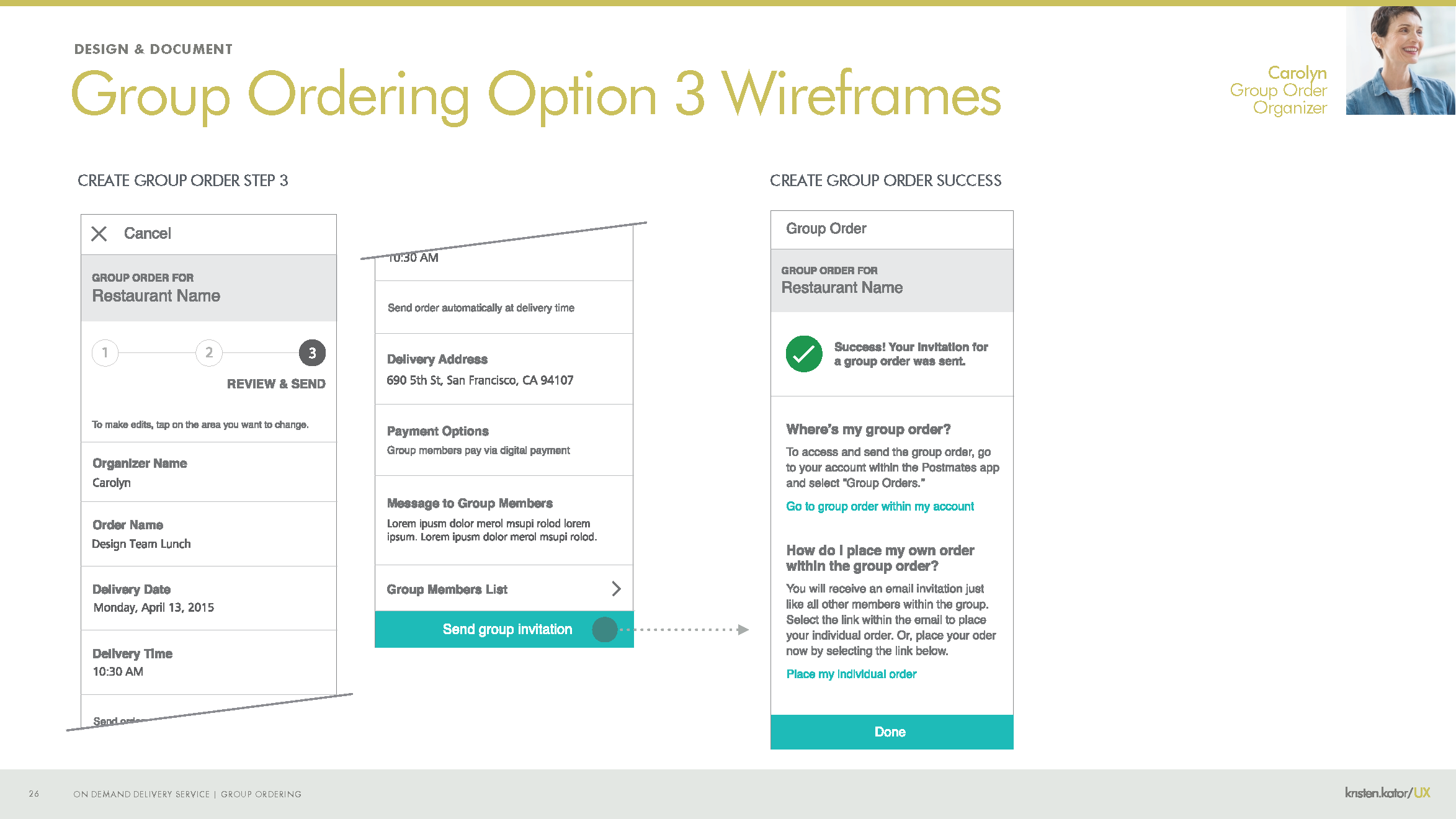
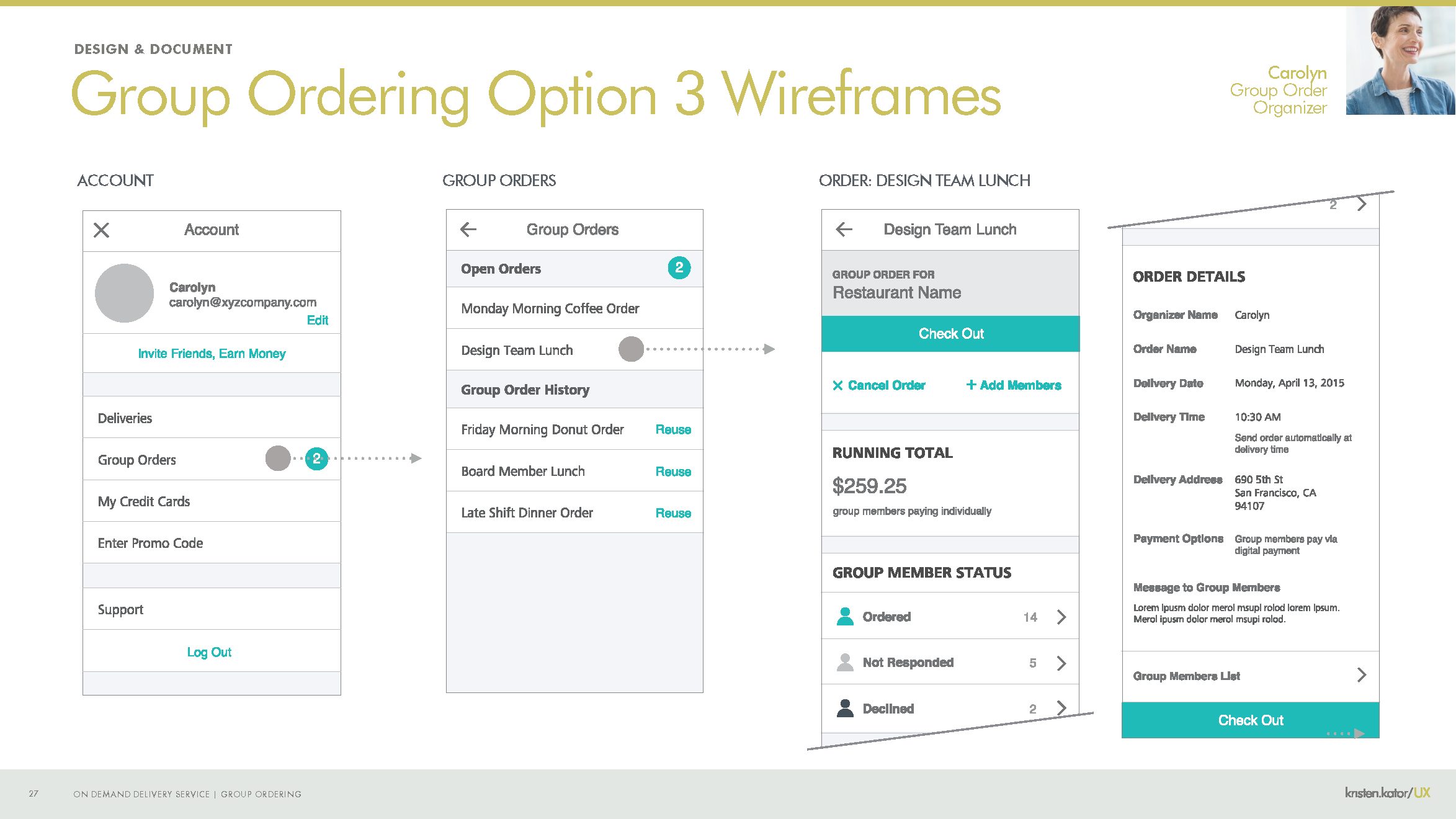

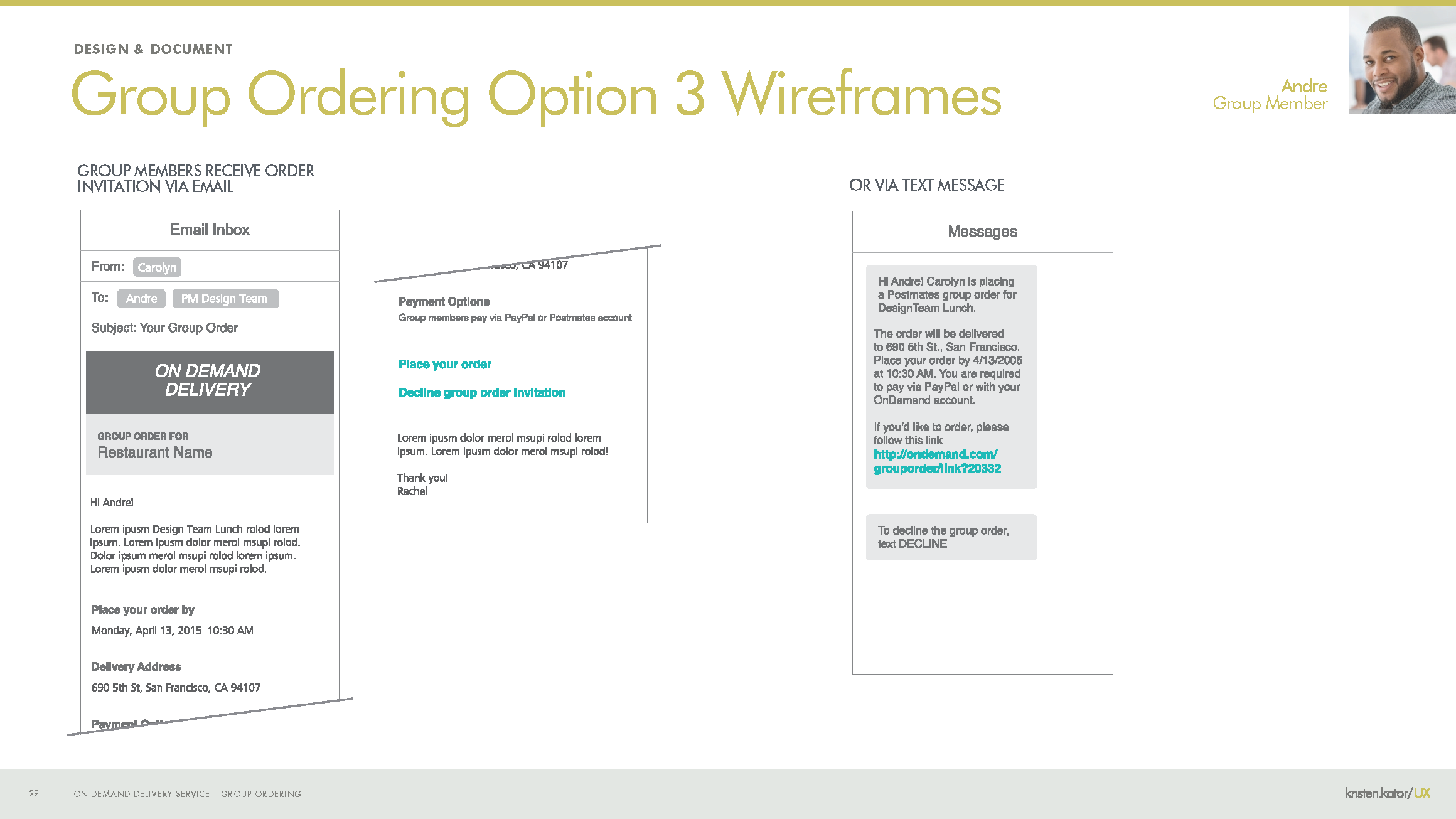
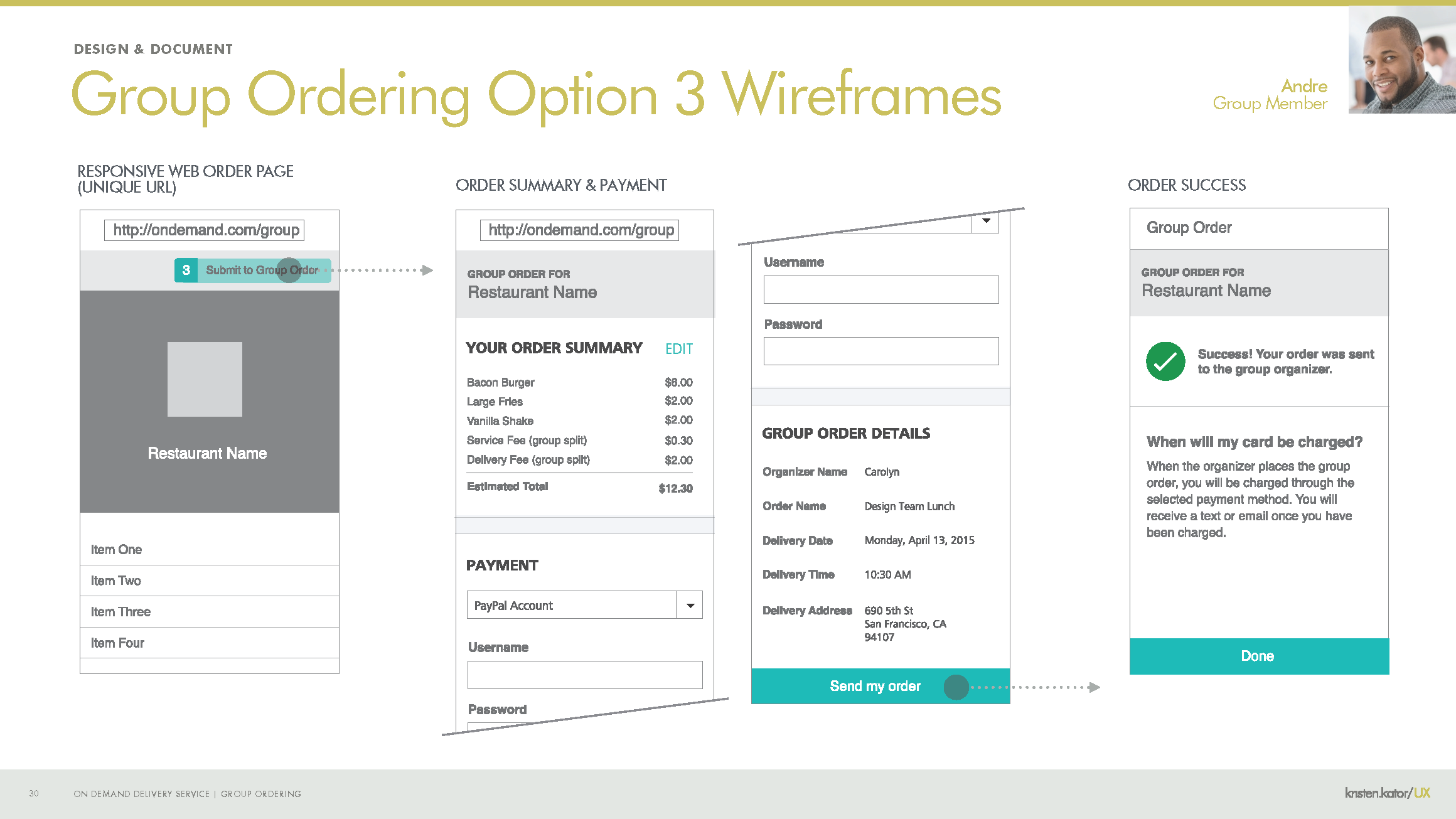
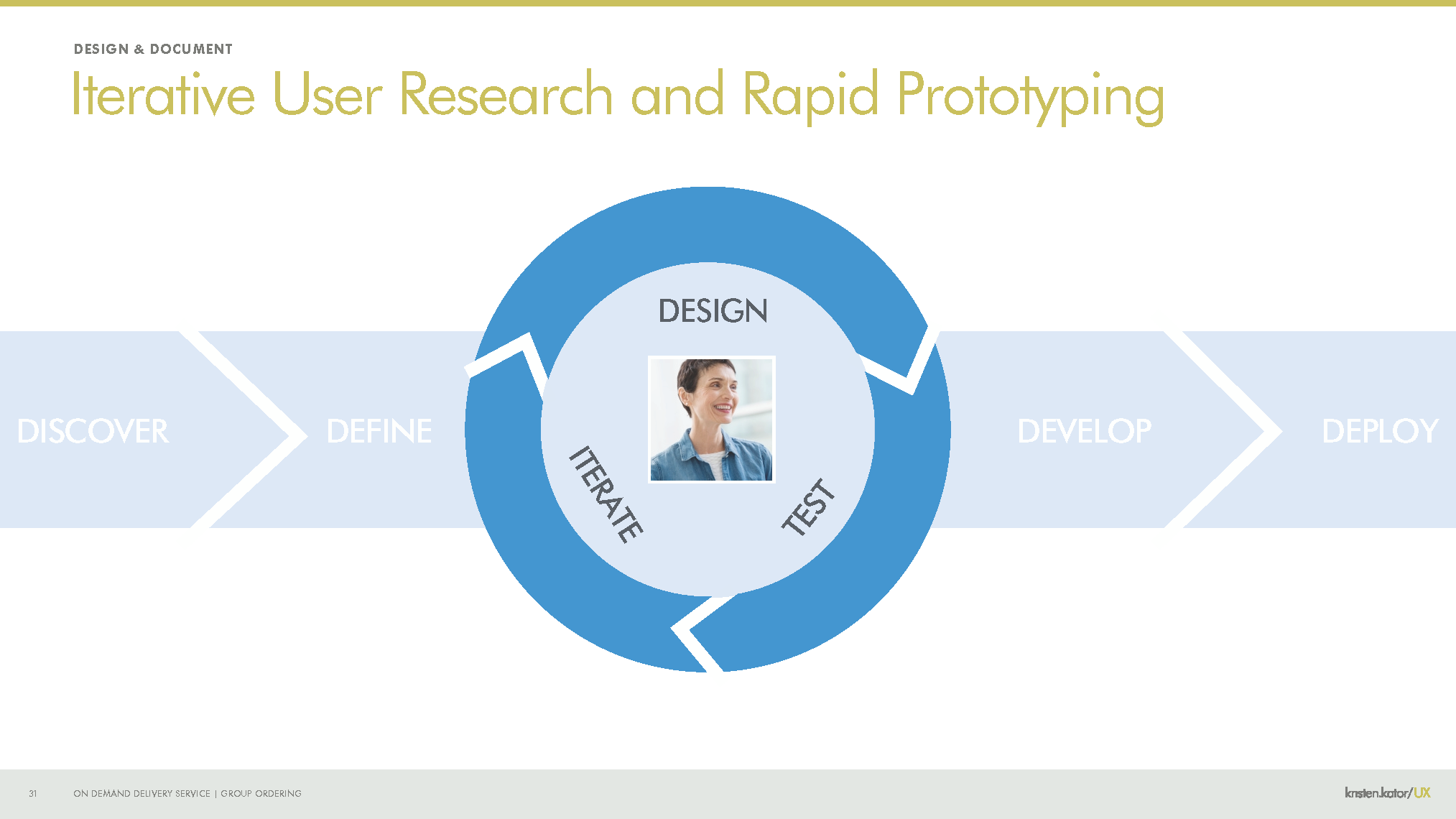
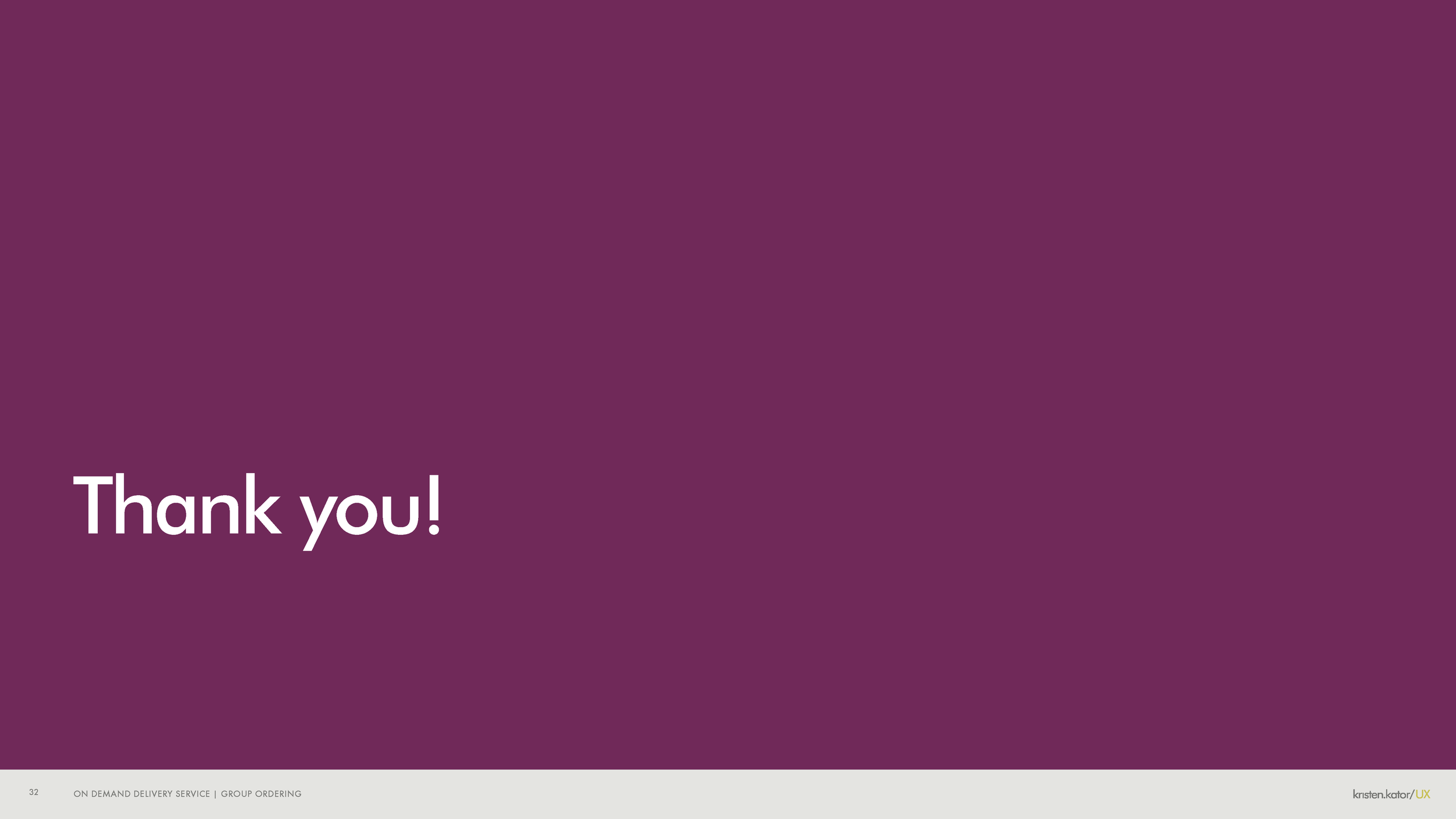
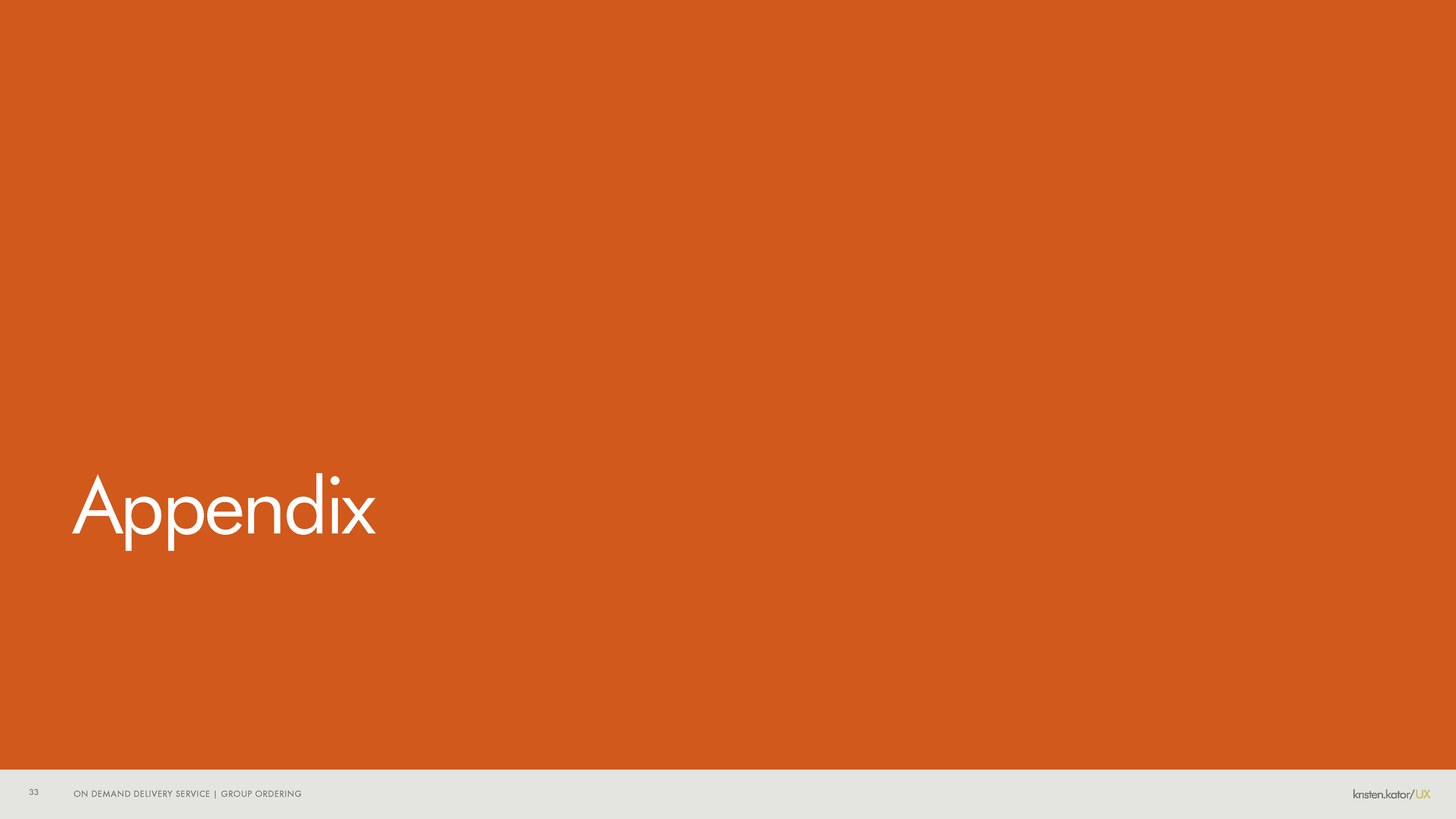
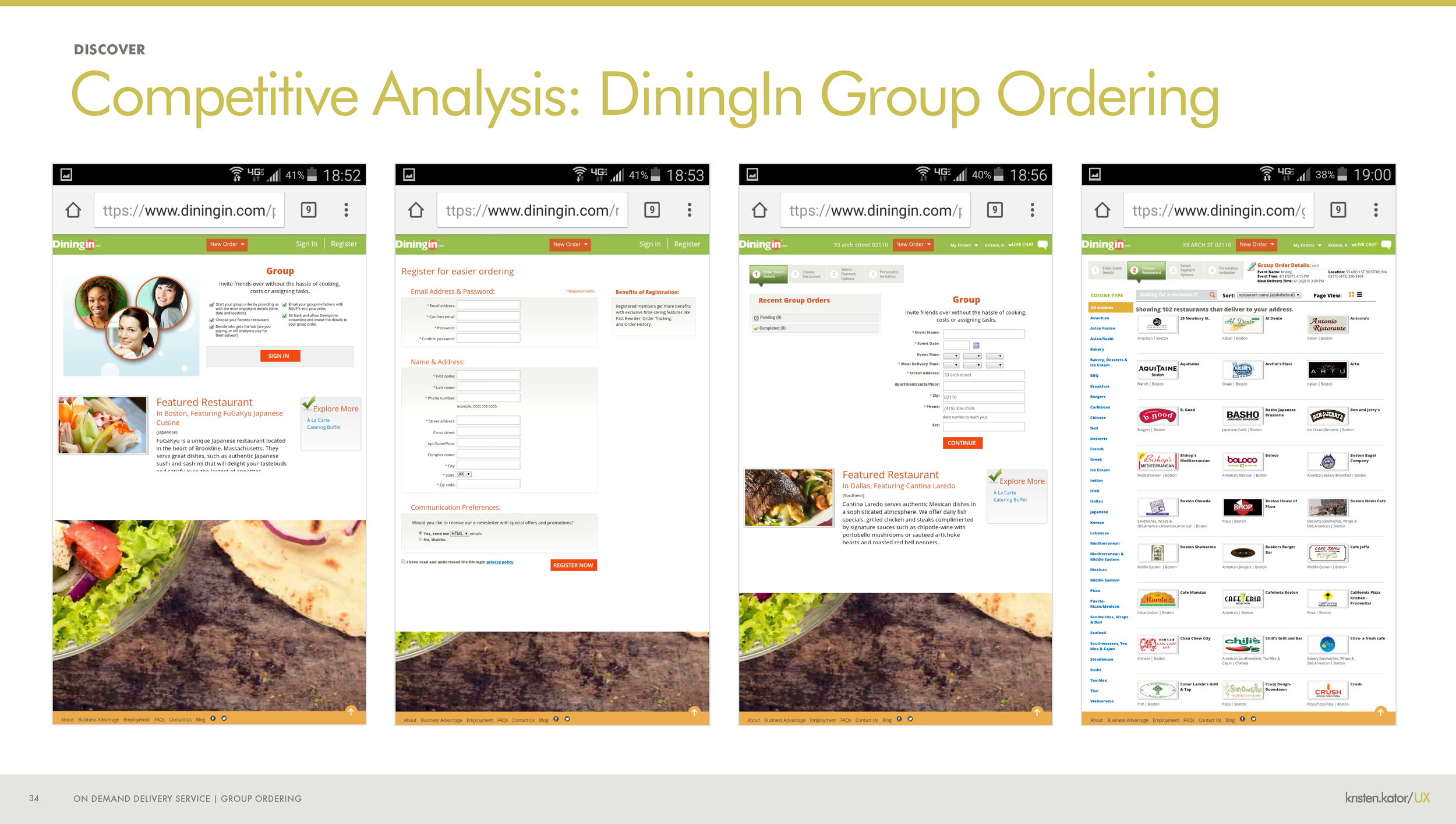
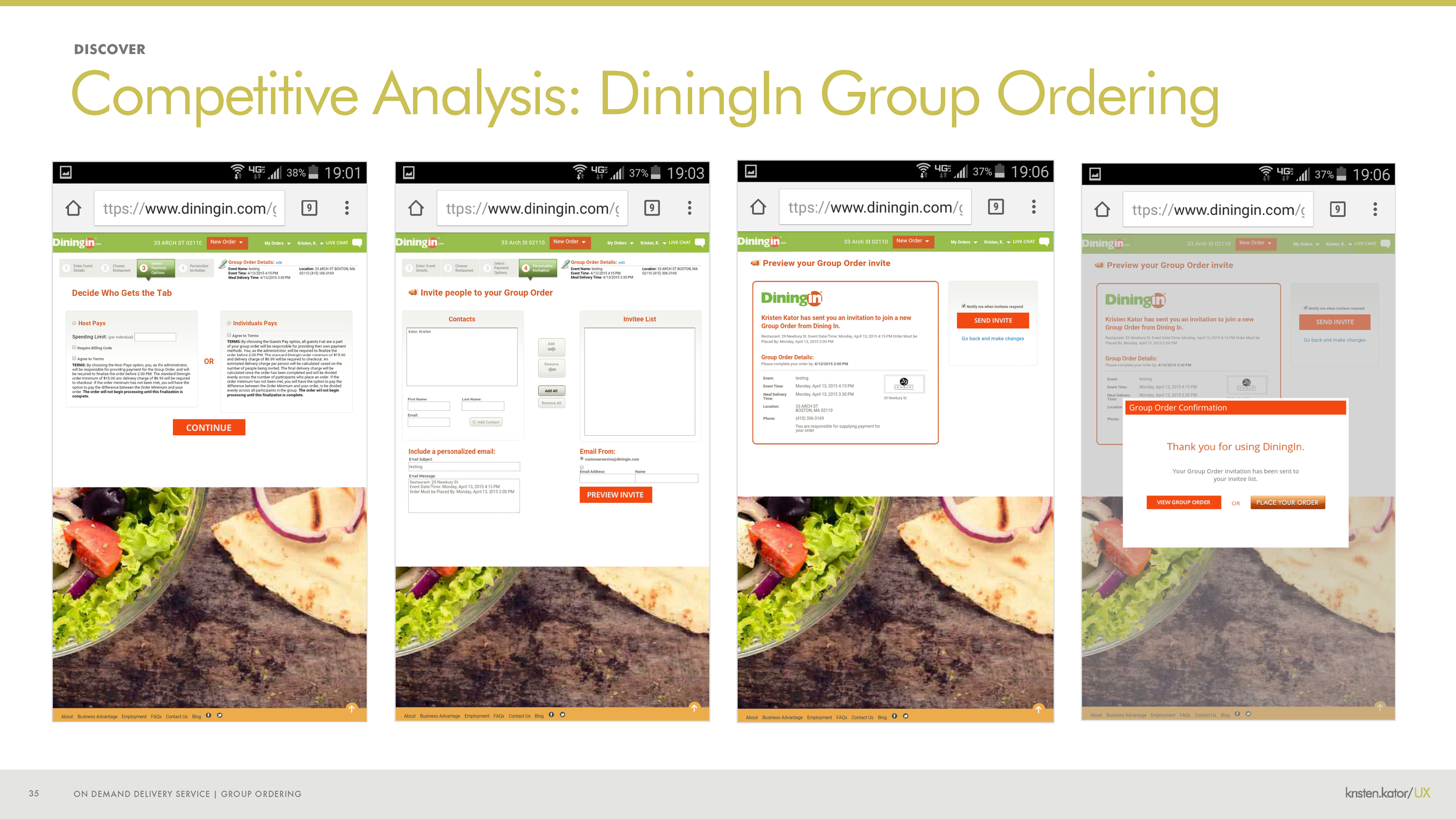
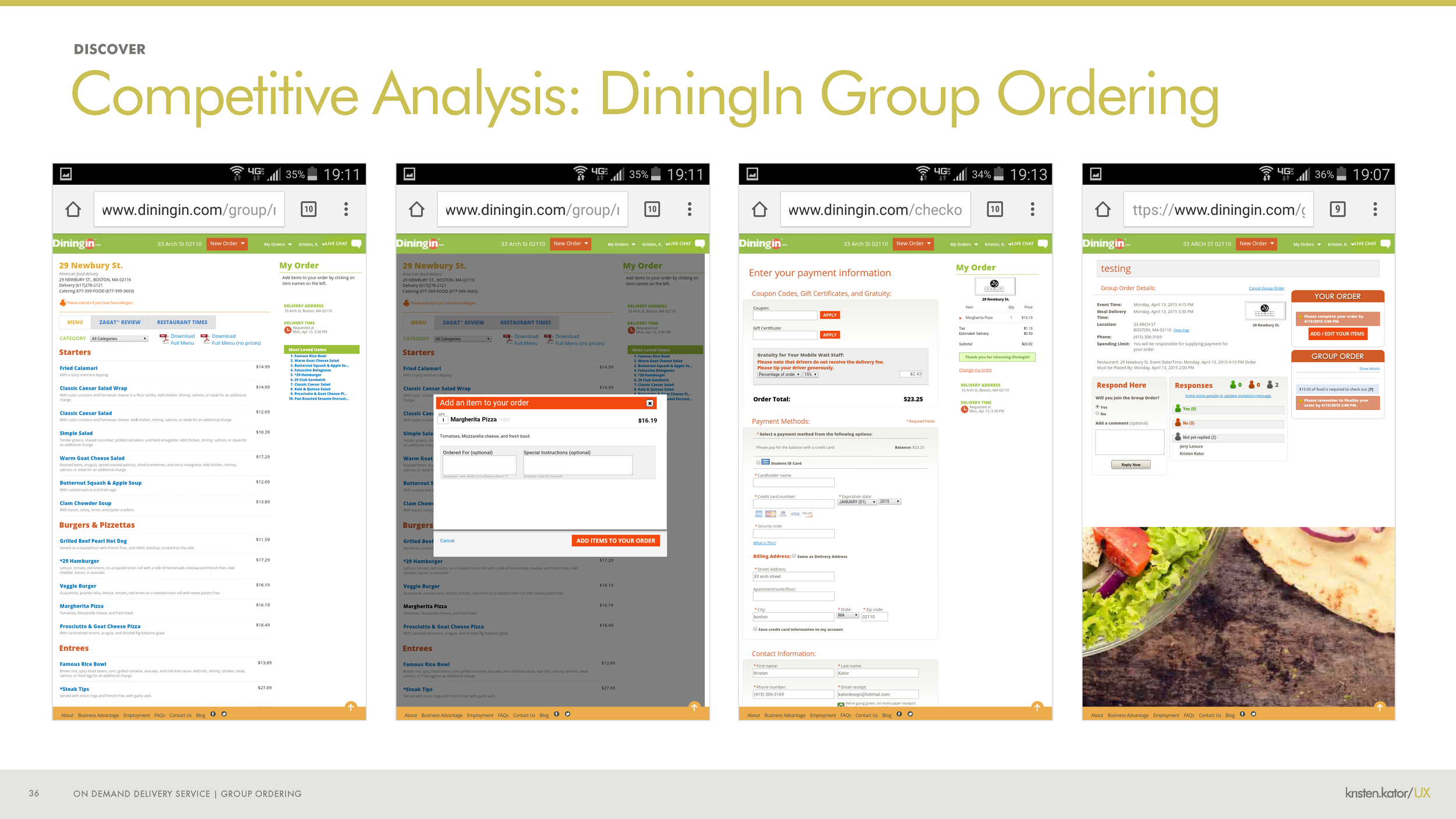

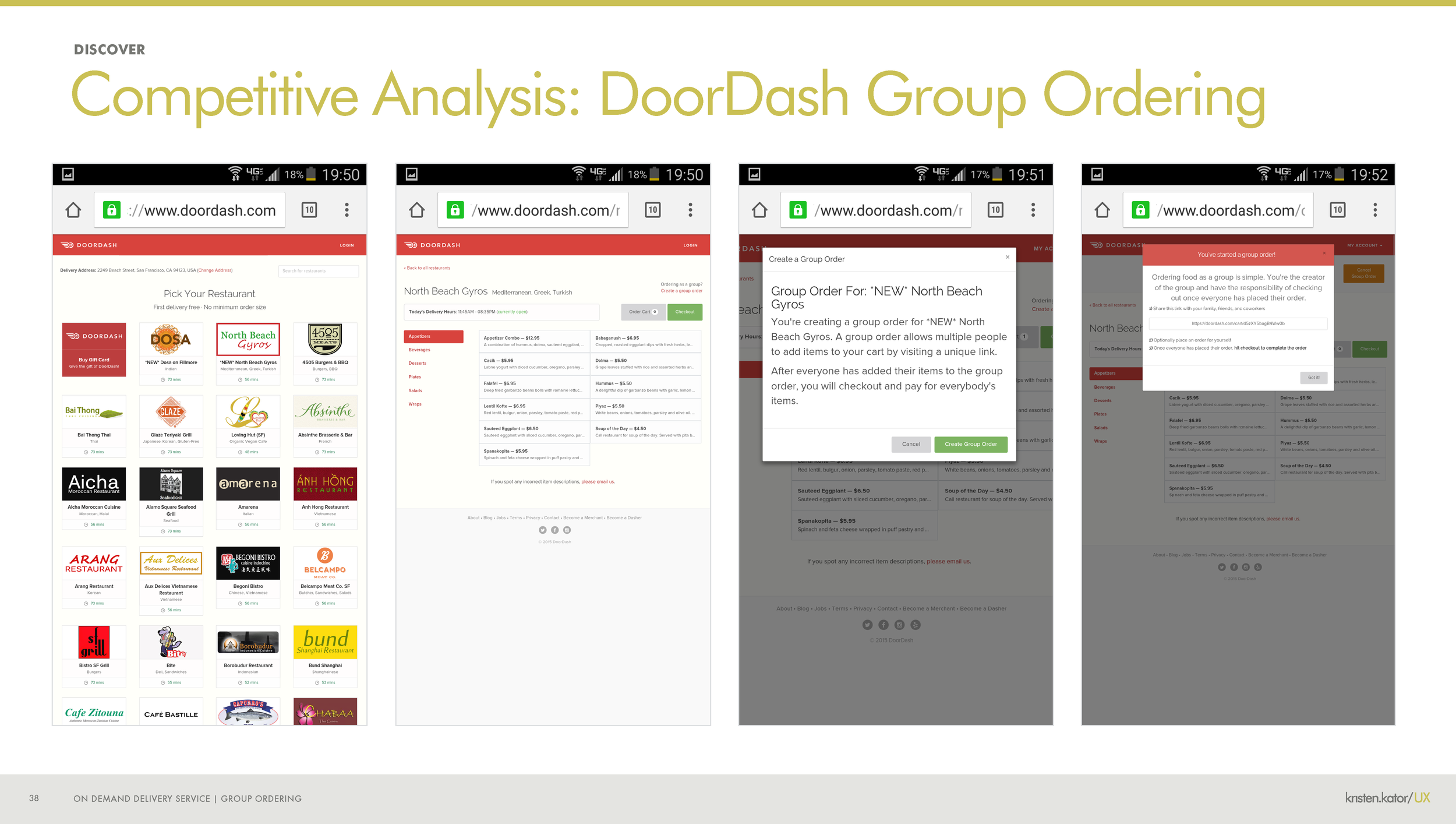
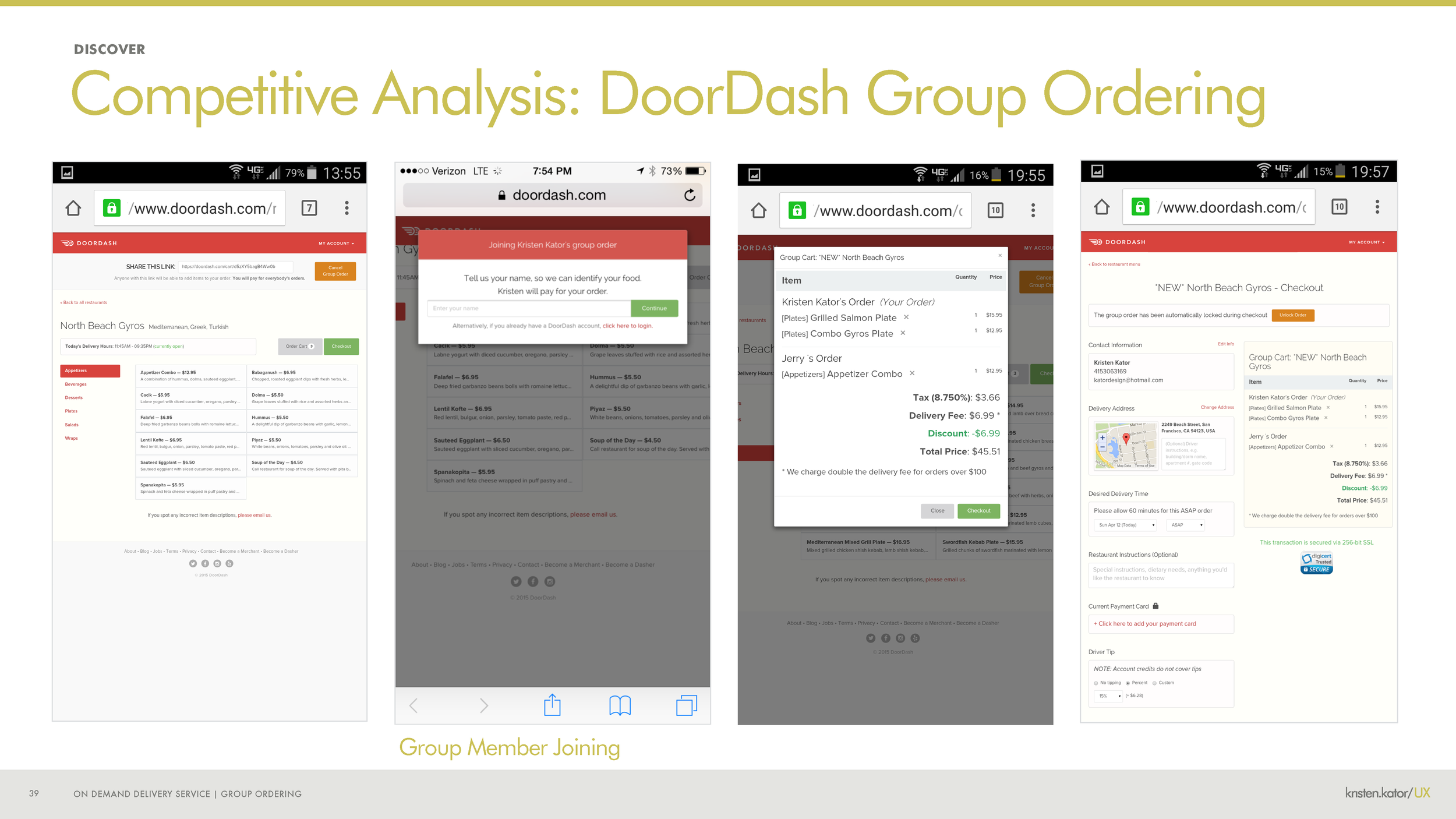
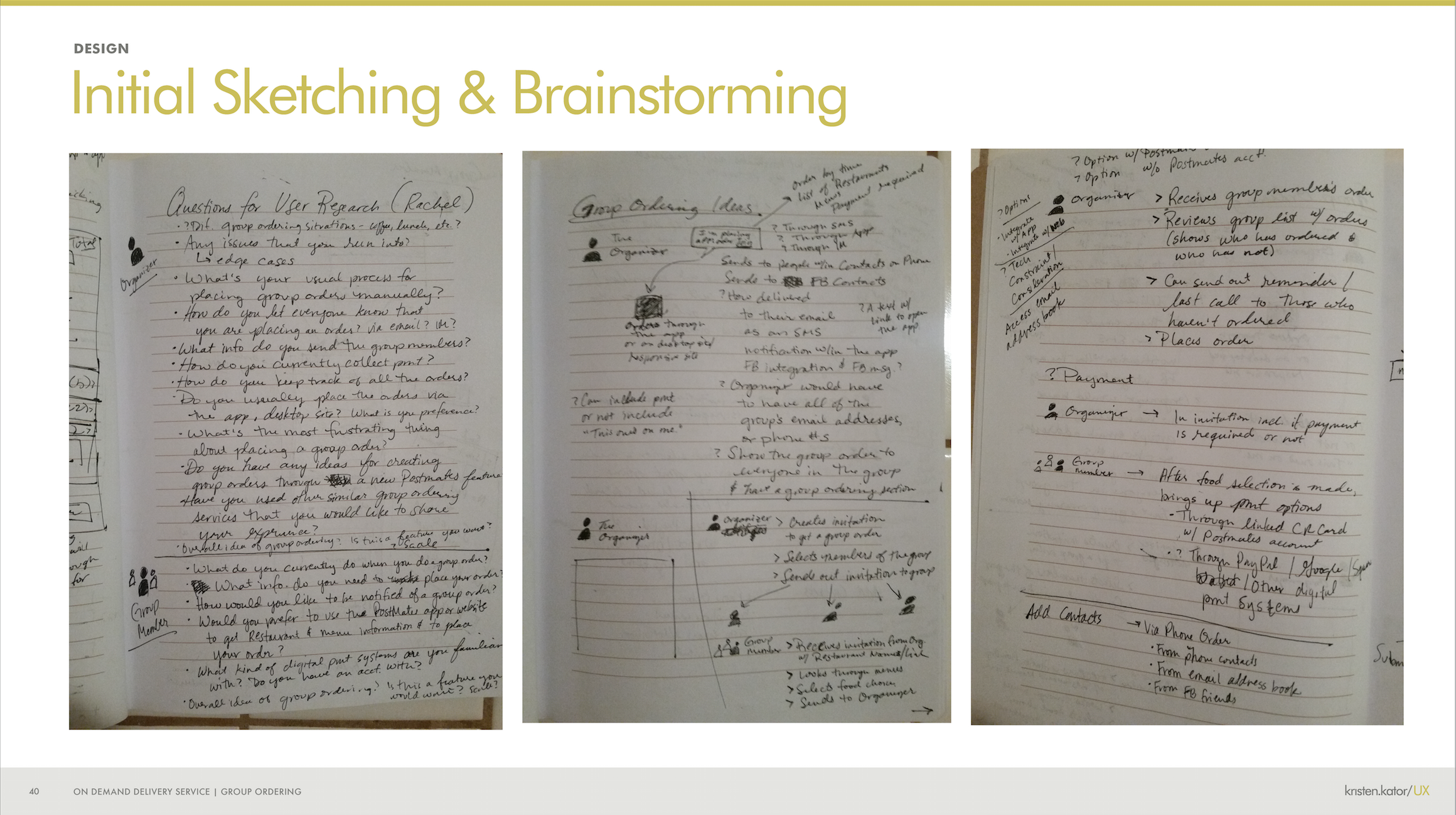

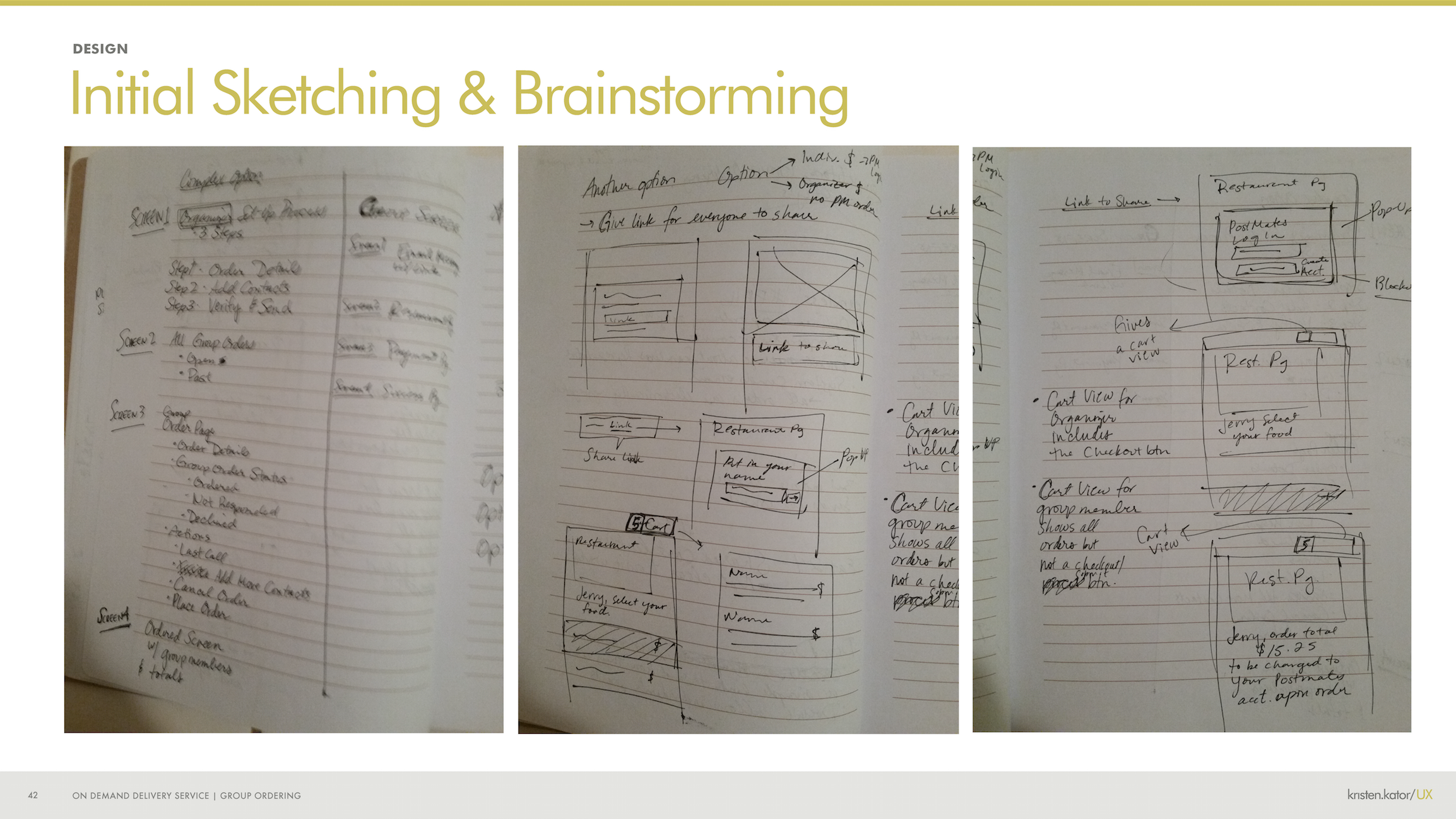
PROJECT DESCRIPTION
To demonstrate my mobile UI experience to potential employers, I designed a new feature for one of my favorite on-demand delivery services. I then created a presentation to show my design process from beginning to end. The new feature for the app/mobile site is group ordering, which allows customers to place food orders as a large group and have it delivered to the same address. It also includes more complex design solutions such as splitting the bill.
The presentation covers user wants/needs, user research, competitive analysis of group ordering, setting design/business goals, and understanding constraints. I provide three design approaches and explore one approach in detail. Final wireframes of the recommended approach are found near the end of the document. The appendix includes my original brainstorming notes and drawings.
PROJECT: SKY WORKPLACE TECHNOLOGY HACKATHON (WINNER)
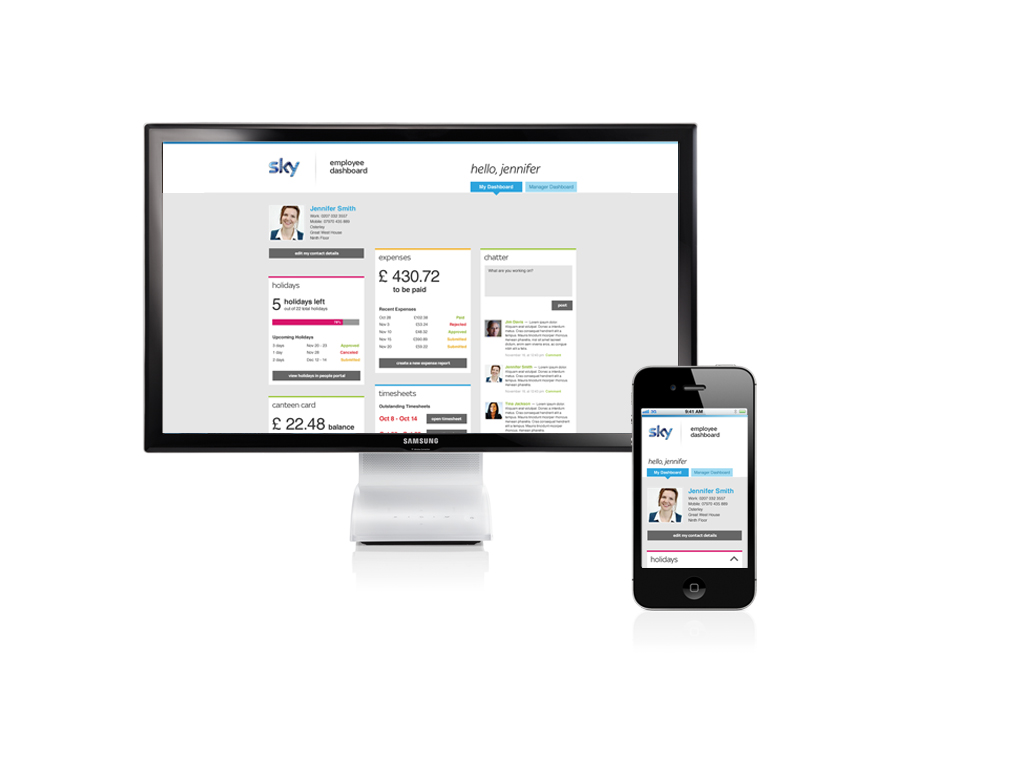
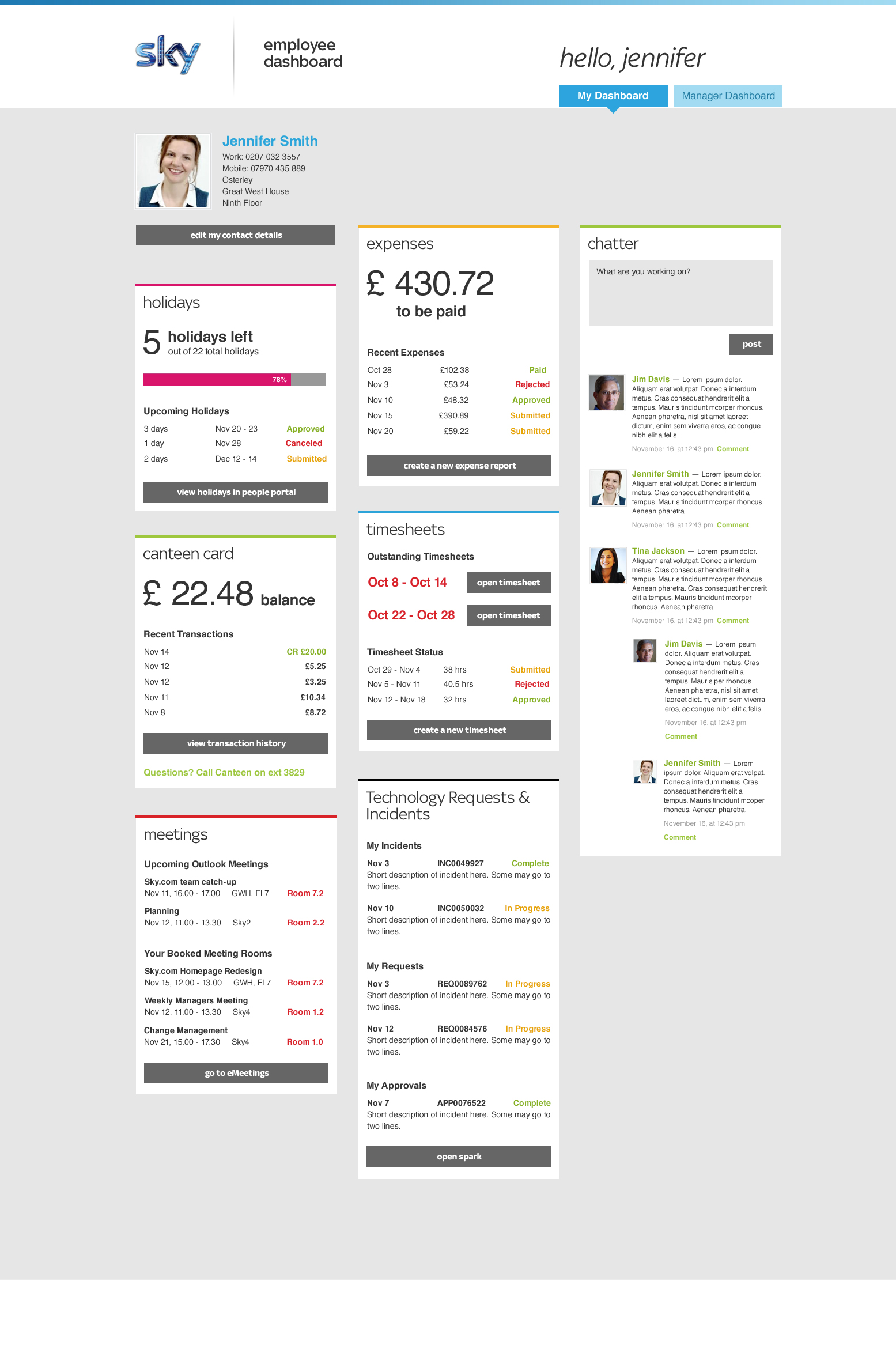
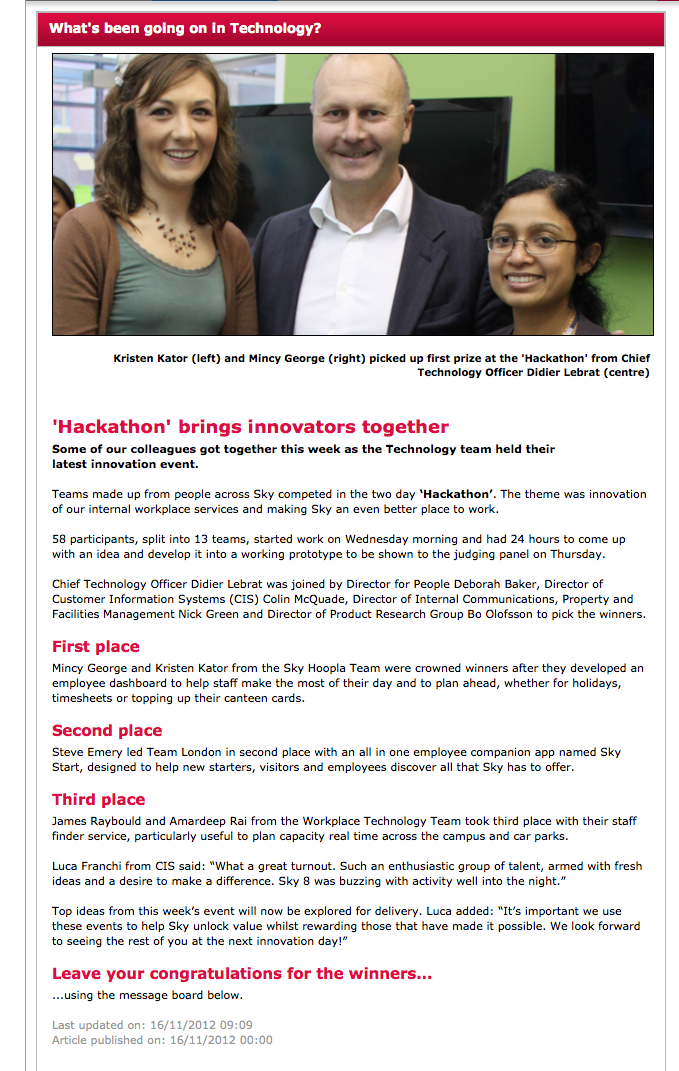
PROJECT DESCRIPTION
Every year at Sky, they hold a company wide two-day hackathon with a different theme each year. The theme for 2012 was Innovation of Internal Workplace Services. I teamed up with Mincy George, a friend and back-end developer, to create a fully responsive employee dashboard where Sky staff could log-in from any device to get all of their relevant HR and IT information. The dashboard included holiday time tracking, expense reporting, and HelpDesk updates. The hackathon project presentations were judged by Sky's Chief Technology Officer and several director level executives. Mincy and I were crowned the winners of the hackathon. We received Amazon gift cards and were featured on Sky's intranet news. Our project was passed on to the Workplace Technology team within Sky to make our idea a reality for Sky employees.
PROJECT: AUTODESK INNOVATION DAY (WINNER)
PROJECT DESCRIPTION
While working on contract at Autodesk, I participated in the IT department's Innovation Hack Day. The department created a list of potential areas of improvement within the company. They invited employees to select a topic from the list and create a hackday project. I signed up with Team Q which included developers Chris Chin and Philip Ly and IT Customer Service Director Jerry Leisure. We selected the topic of employee meeting spaces.
At Autodesk, there were various issues around conference rooms. Many rooms were booked even when no one was in them. The technology in the rooms were not reliable, and it was unclear what equipment was in each room. It was difficult to tell the occupancy and location of the room, especially when you were visiting a new office space. There was no easy way to book rooms on the fly or know if a conference room was open. For our hackday project, we came up with technical solutions to make day-to-day conference use easier for Autodeskers.
Our winning project judged by the Autodesk CFO included several ideas. One idea was to create a mobile app that employees could use to find the nearest open conference room and direct them to the room using Wi-Fi triangulation. The app would also allow them to schedule conference rooms on demand and get information such as equipment and occupancy. Another idea was to create a conference room reservation and monitoring system. Using free Surfaces gifted to us from Microsoft, tablet kiosks could be installed next to conference room doors. The system would allow employees to check-in at the beginning of their meeting to keep their reservation. After 10 minutes the room would be released if no employees checked-in. This would open up rooms that were not being used. The system also allowed users to look at the conference room schedule and book meetings on demand directly from the kiosk. Tech issues within the conference room could be reported from the kiosk as well. Just a few short weeks after we were crowned as the hackday winners, our team was given the green light to make our ideas a reality. Conference room tablet kiosks can now be used in several Autodesk offices.
PROJECT: CRAZ PL8S GAME CONCEPT
PROJECT DESCRIPTION
While stuck in traffic, I try to keep myself entertained by looking around for personalized license plates. I've noticed that some of the messages are especially difficult to figure out. I thought it would be fun to create a card-based game where participants guess the message of a personalized license plate. The person who gets the message right first is awarded a point. Some cards have bonus questions where participants can score an extra point for answering correctly.
PROJECT: BLUE_NO_WHERE
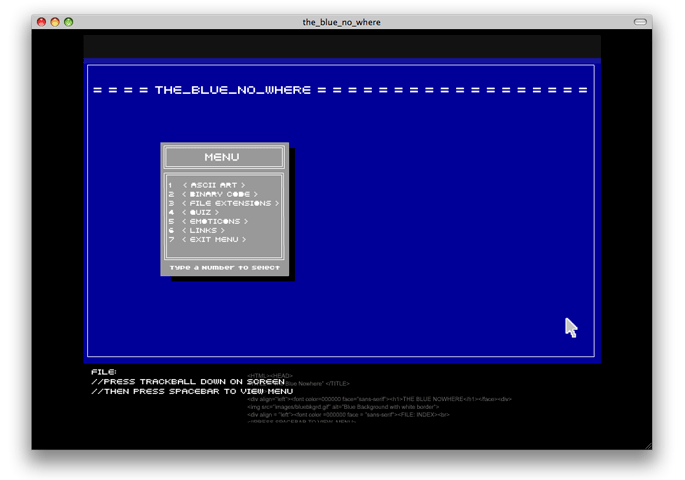


PROJECT DESCRIPTION
Blue_No_Where was one of my first Flash projects in a course I took in college. I keep it in my portfolio because it's still one of my favorite projects. I was free from creative restraints and was introduced to the possibilities of Flash and actionscripting. To get the right look and feel for the site, I spent hours in the library researching early GUIs. The site included an ASCII Art gallery, a computer quiz that returns a score, a file name extension game, a binary code translator, animated emoticons, links for computer nerds, and don't forget the amazing Atari sound effects.






